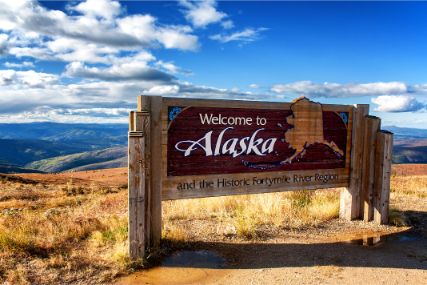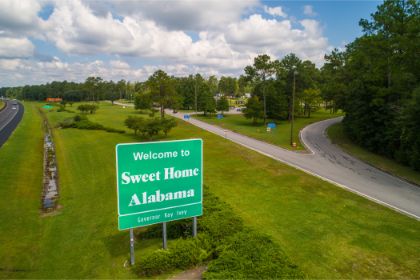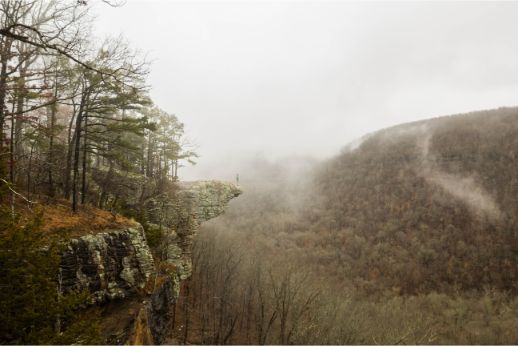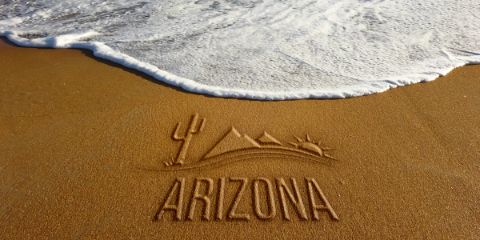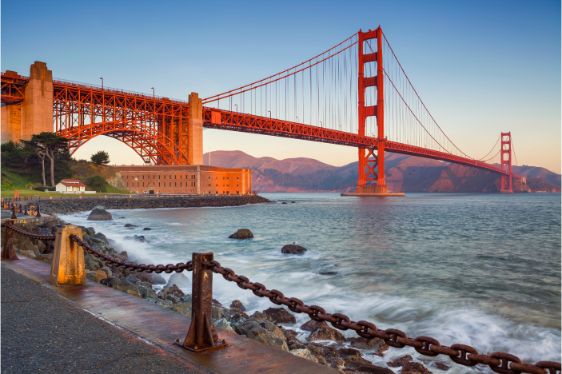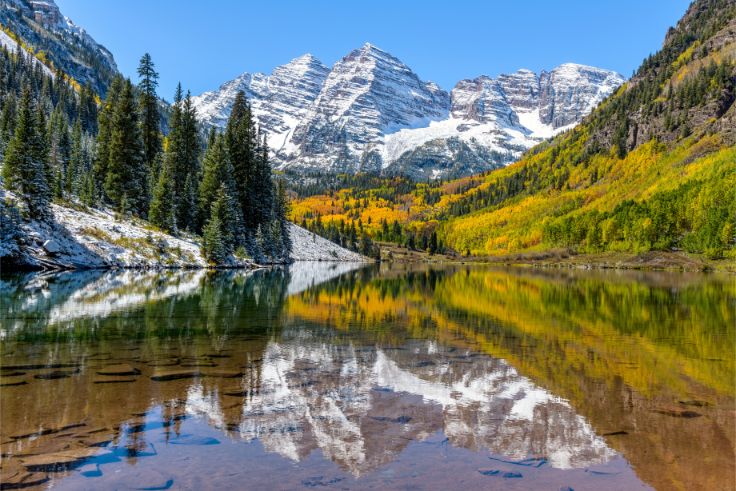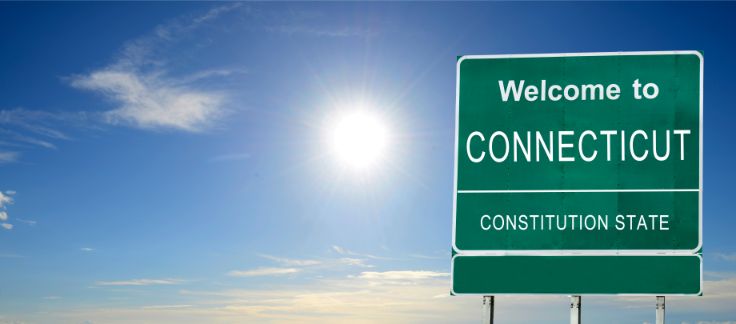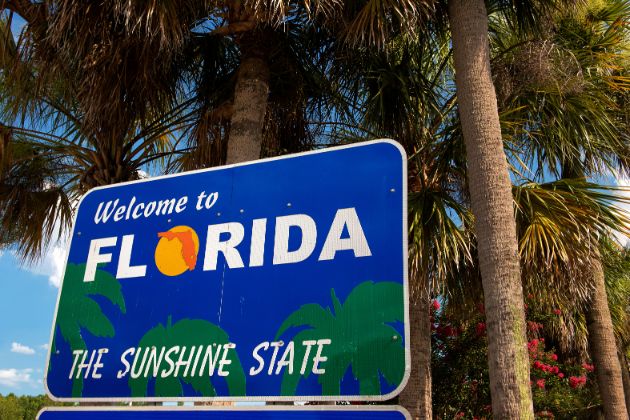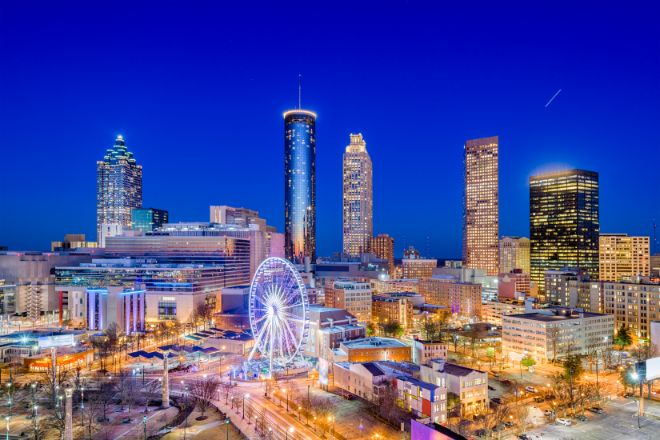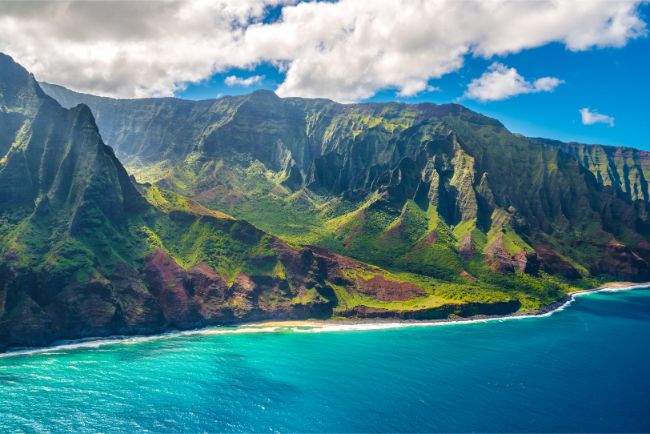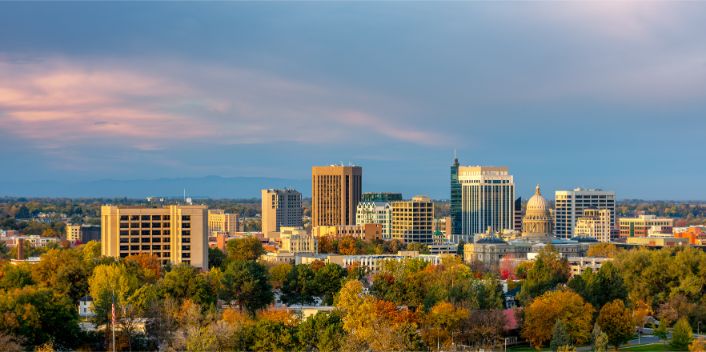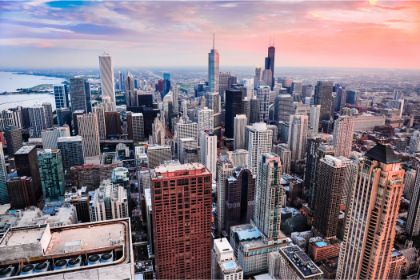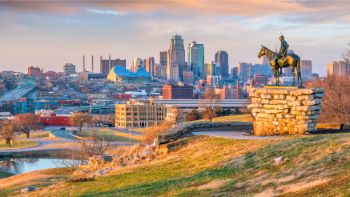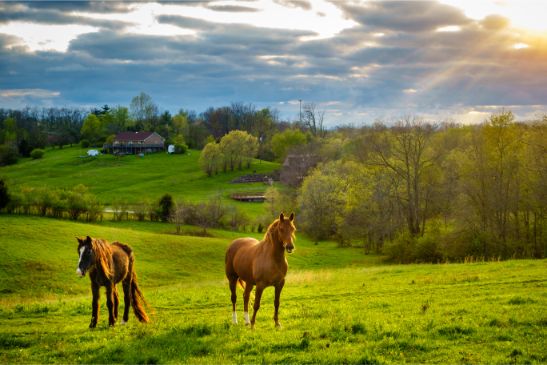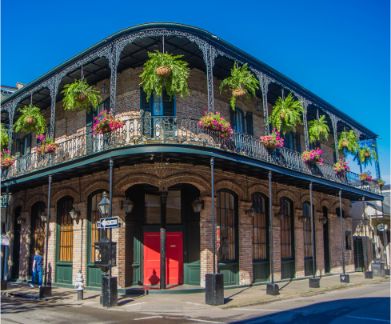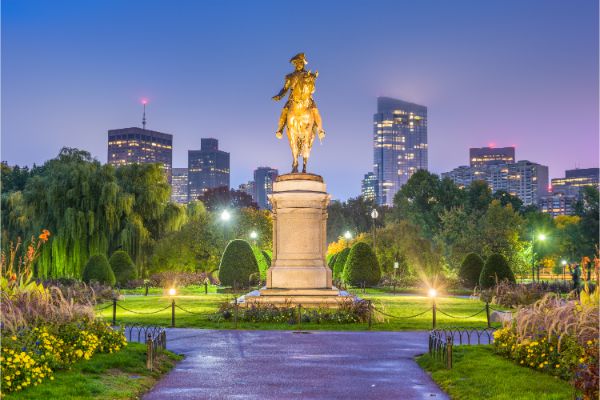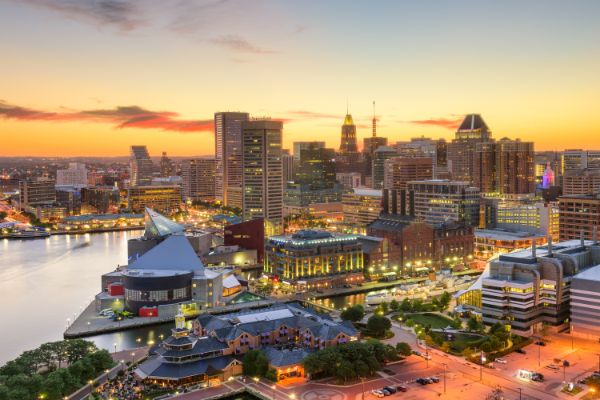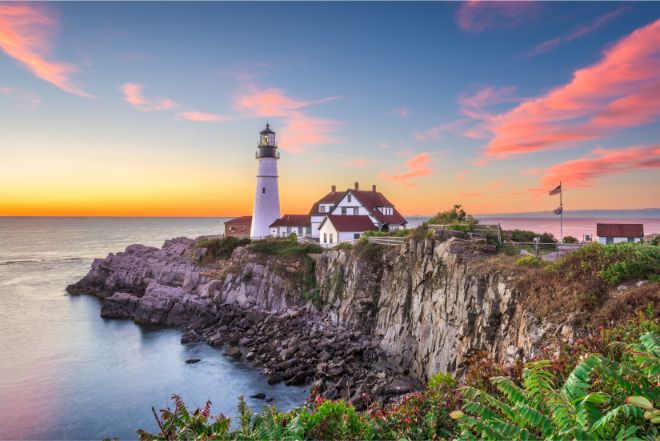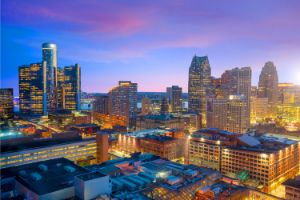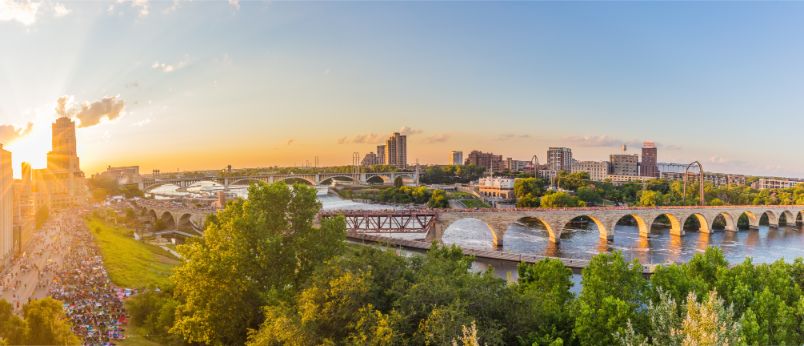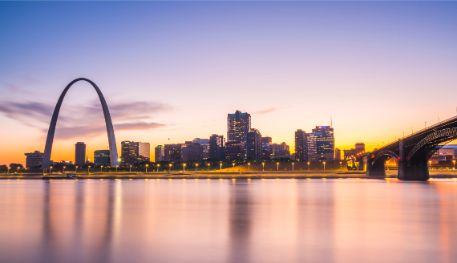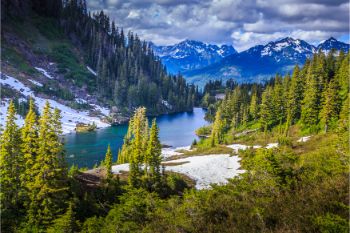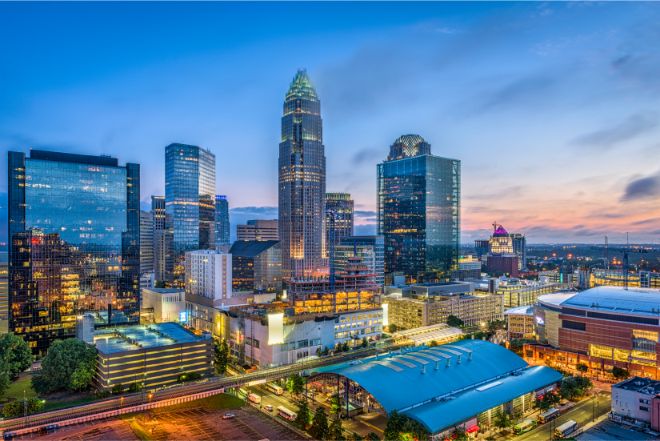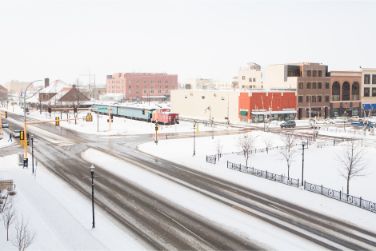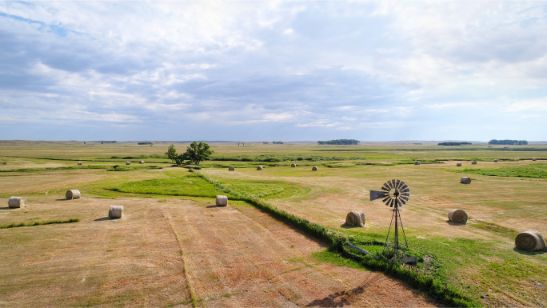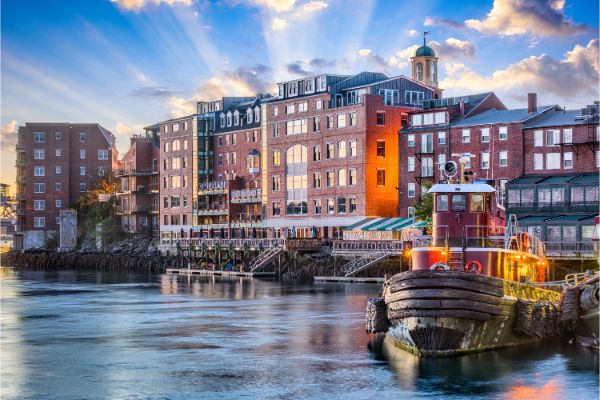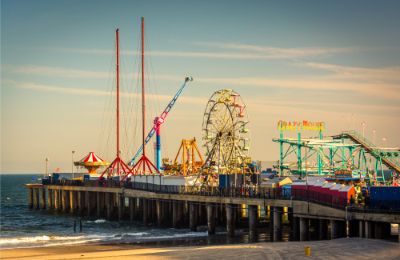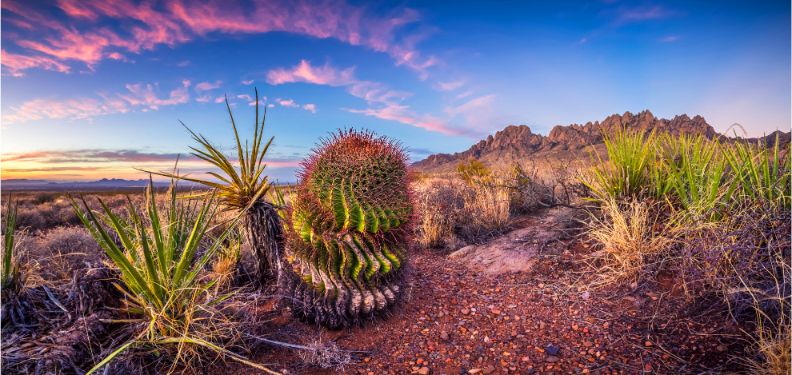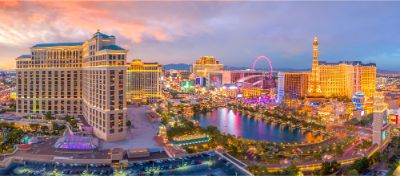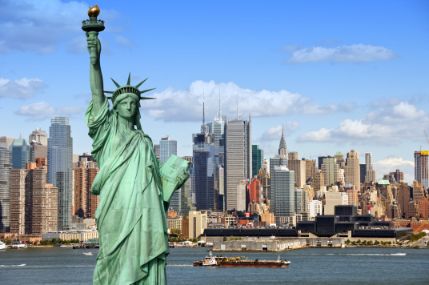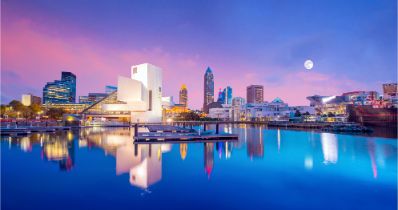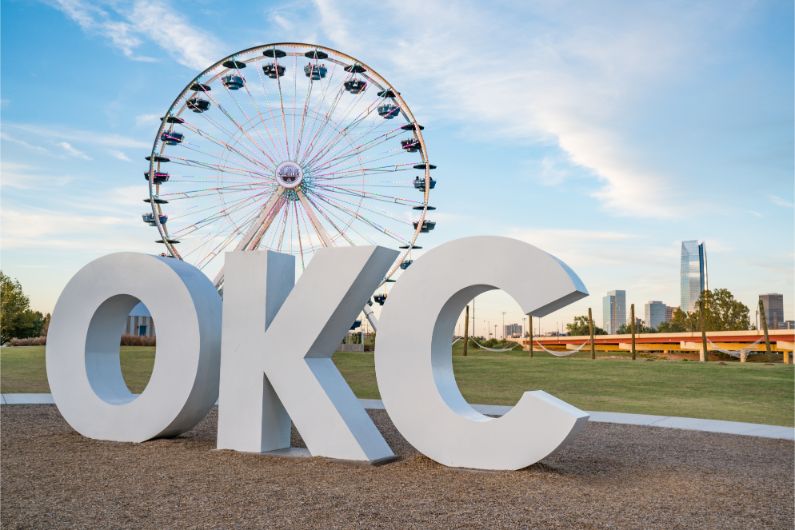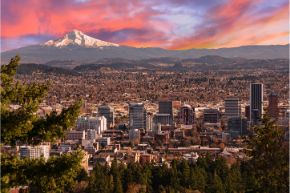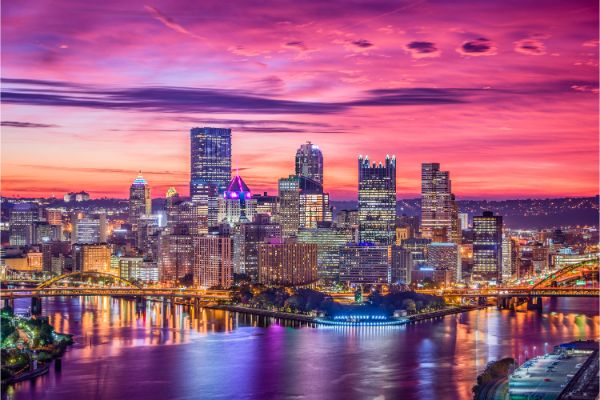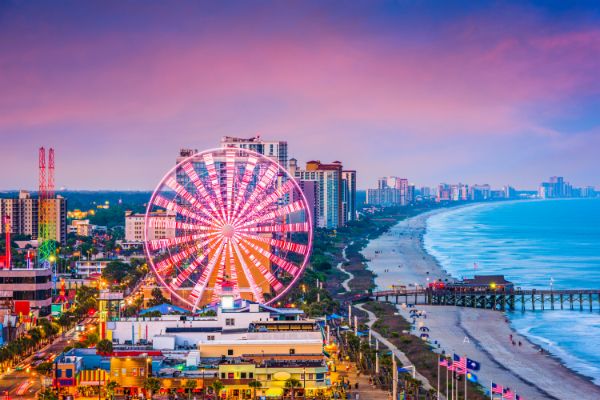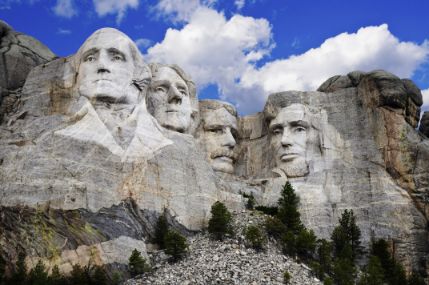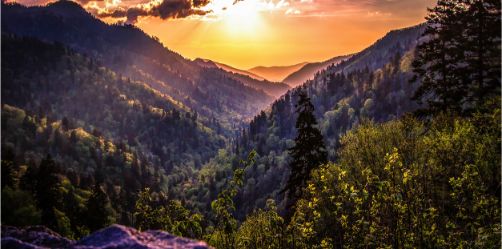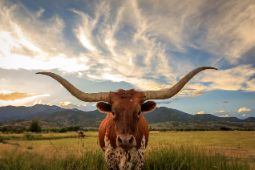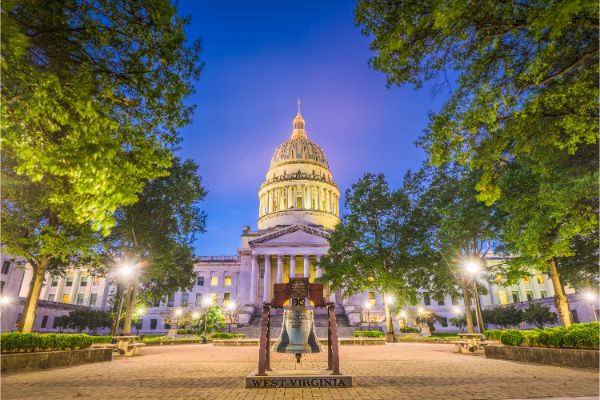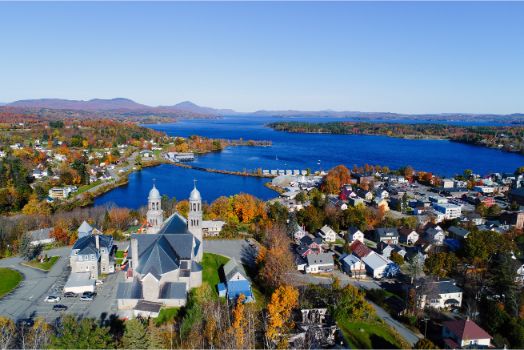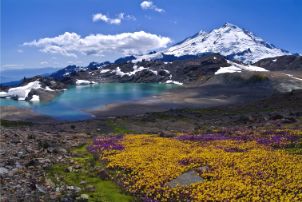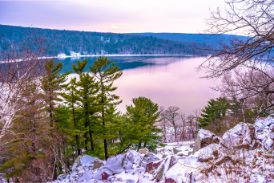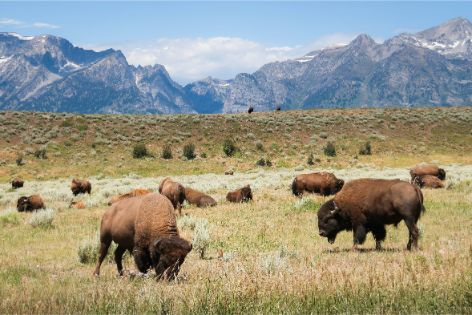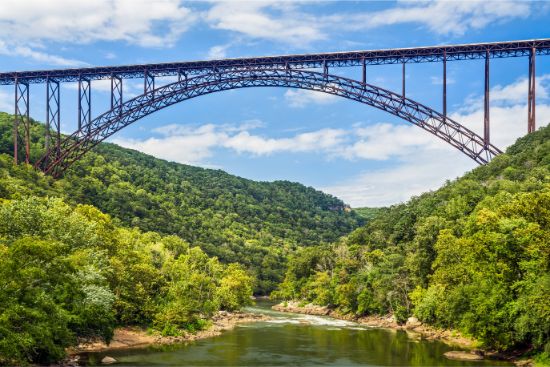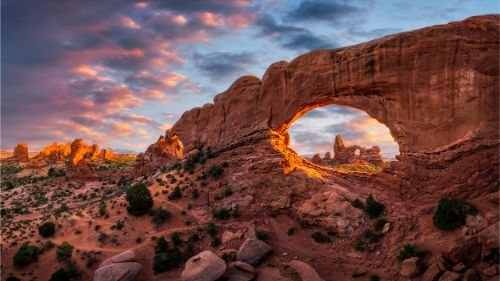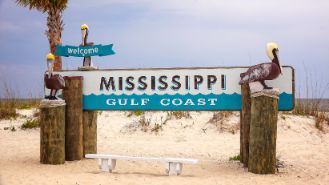
Please Wait.....
The Best Allied Healthcare Assignments by State
Inverted Healthcare agency offers 1000s of the best travel nurse assignments nationwide. Find top-rated traveling nurse contracts for exclusive positions and assignments available with pay listed and for immediate hire. Check out our job opportunities and apply today…
The largest state (in area) of the United States, Alaska was admitted to the union as the 49th state in 1959, and lies at the extreme northwest of the North American continent. Acquired by the United States in 1867, the territory was dubbed “Seward’s Folly” after U.S. Secretary of State William Seward, who arranged to purchase the land from Russia. Critics of the purchase believed that the land had nothing to offer, but the discovery of gold in the 1890s created a stampede of prospectors and settlers. Alaska is bounded by the Beaufort Sea and the Arctic Ocean to the north; Canada’s Yukon Territory and British Columbia province to the east; the Gulf of Alaska and the Pacific Ocean to the south; the Bering Strait and the Bering Sea to the west; and the Chukchi Sea to the northwest. The capital is Juneau. Interesting Facts Russia controlled most of the area that is now Alaska from the late 1700s until 1867, when it was purchased by U.S. Secretary of State William Seward for $7.2 million, or about two cents an acre. During World War II, the Japanese occupied two Alaskan islands, Attu and Kiska, for 15 months. Alaska contains 17 of the 20 highest peaks in the United States. At 20,320 feet, Mt. McKinley is the tallest mountain in North America. Alaska has roughly 5,000 earthquakes every year. In March of 1964, the strongest earthquake recorded in North America occurred in Prince William Sound with a magnitude of 9.2. The most powerful volcanic explosion of the 20th century occurred in 1912 when Novarupta Volcano erupted, creating the Valley of Ten Thousand Smokes in Katmai National Park. The temperature dropped to a record -80 degrees Fahrenheit at Prospect Creek Camp in 1971. The state of Rhode Island could fit into Alaska more than 420 times. People have inhabited Alaska since 10,000 BCE. At that time a land bridge extended from Siberia to eastern Alaska, and migrants followed herds of animals across it. Of these migrant groups, the Athabaskans, Aleuts, Inuit, Yupik, Tlingit and Haida remain in Alaska.
Alabama, which joined the union as the 22nd state in 1819, is located in the southern United States and nicknamed the “Heart of Dixie.” The region that became Alabama was occupied by aboriginals as early as some 10,000 years ago. Europeans reached the area in the 16th century. During the first half of the 19th century, cotton and slave labor were central to Alabama’s economy. The state played a key role in the American Civil War; its capital, Montgomery, was the Confederacy’s first capital. Following the war, segregation of blacks and whites prevailed throughout much of the South. In the mid-20th century, Alabama was at the center of the American Civil Rights Movement and home to such pivotal events as the Montgomery Bus Boycott. In the early 21st century, the state’s economy was fueled in part by jobs in aerospace, agriculture, auto production and the service sector. Interesting Facts In 1919, the city of Enterprise erected a monument to the boll weevil in recognition of the destructive insect’s role in saving the county’s economy by encouraging farmers to grow more lucrative crops such as peanuts instead of traditional cotton. The DeSoto Caverns near the city of Birmingham, which contain a 2,000-year-old Native American burial site, served as a clandestine speakeasy with dancing and gambling during Prohibition. Alabama was the first state to declare Christmas a legal holiday, in 1836. The Tuskegee Airmen, the first African-American flying unit in the U.S. military, were trained in Alabama. Their accomplished combat record, including the accumulation of more than 850 medals, was an important factor in President Truman’s decision to desegregate armed forces in 1948. In 1965, five months before President Johnson signed the Voting Rights Act prohibiting discriminatory voting practices, thousands of non-violent protesters joined a 54-mile Selma to Montgomery march to bring attention to the injustice African Americans faced when attempting to register to vote. The Saturn V rocket that made it possible for humans to land on the moon was designed in Huntsville, Alabama.
Part of the land acquired in the Louisiana Purchase, Arkansas became a separate territory in 1819 and achieved statehood in 1836. A slave state, Arkansas became the ninth state to secede from the union and join the Confederate States of America. Today Arkansas ranks 27th among the 50 states in area, but, except for Louisiana and Hawaii, it is the smallest state west of the Mississippi River. Its neighbors are Missouri to the north, Tennessee and Mississippi to the east, Louisiana to the south, Texas to the southwest and Oklahoma to the west. The name Arkansas was used by the early French explorers to refer to the Quapaw people—a prominent indigenous group in the area—and to the river along which they settled. The term was likely a corruption of akansea, the word applied to the Quapaw by another local indigenous community, the Illinois. Little Rock, the state capital, is located in the central part of the state. In 1957, Little Rock Central High School became the focus of national attention when federal troops were deployed to the campus to enforce integration. Interesting Facts Established by President Theodore Roosevelt in 1907, Ouachita National Forest reigns as the oldest national forest in the South. The Ouachita Mountains are unusual in that their ridges run east to west as opposed to north to south. Arkansas is home to a wide array of natural resources including petroleum, natural gas, bromine and silica stone. Throughout the 20th century, the state was responsible for providing roughly 90 percent of all domestic Bauxite, from which aluminum is made. Although it was not officially designated a national park until 1921, the territory now known as Hot Springs National Park was originally set aside by Congress as a U.S. government reservation in 1832—40 years before Yellowstone National Park was established as the “first” national park. With an average temperature of 143 degrees Fahrenheit, the hot springs have been used for centuries as therapeutic baths. Following the Supreme Court ruling in Brown v. Board of Education of Topeka, which outlawed segregation in public education, Little Rock’s Central High School became a battleground in the fight for civil rights when the Arkansas National Guard denied nine African-American students entry in 1957. Weeks later, on September 25th, the students attended their first full day of school under federal troop escort ordered by President Dwight Eisenhower. The Ozark National Forest covers 1.2 million acres and includes more than 500 species of trees and woody plants. Arkansas is the nation’s leading producer of rice and poultry and grows nearly every crop produced in the United States with the exception of citrus fruits. From 1874 to 1967, every Arkansas governor was a member of the Democratic Party.
Arizona, the Grand Canyon state, achieved statehood on February 14, 1912, the last of the 48 coterminous United States to be admitted to the union. Originally part of New Mexico, the land was ceded to the United States in 1848, and became a separate territory in 1863. Copper was discovered in 1854, and copper mining was Arizona’s premier industry until the 1950s. After World War II, the widespread availability of refrigeration and air conditioning caused Arizona’s population to boom and Phoenix to become one of the fastest growing cities in America. Arizona is the sixth largest state in the country in terms of area. Its population has always been predominantly urban, particularly since the mid-20th century, when urban and suburban areas began growing rapidly at the expense of the countryside. Some scholars believe that the state’s name comes from a Basque phrase meaning “place of oaks” while others attribute it to a Tohono O’odham (Papago) Indian phrase meaning “place of the young (or little) spring.” Interesting Facts Formed by the Colorado River over a period of 3 to 6 million years, Arizona’s Grand Canyon is 277 miles long, up to 18 miles wide and one mile deep. Nearly 5 million people visit Grand Canyon National Park each year. Arizona has the greatest percentage of its acreage designated as Indian tribal land in the United States. Oraibi, a Hopi Indian village dating back to at least 1150 AD, is believed to be the oldest continuously inhabited settlement in the United States. The official state flower is the Saguaro Cactus Blossom. The flower blooms in May and June in the middle of the night and closes the next day—surviving only 18 hours for pollination by nocturnal animals like bats and moths. The blossom grows on the Saguaro Cactus, which can reach more than 50 feet tall and live for over 200 years. Navajo Indians from Arizona were enlisted to transmit secret communications for the U.S. Marines after the Japanese bombed Pearl Harbor in 1941. Known as Navajo Code Talkers, these young men created an oral code the enemy was unable to decipher, fulfilling a crucial role during World War II and saving countless lives. Arizona is one of only two U.S. states that do not observe Daylight Saving Time. The one exception is the area occupied by the Navajo Nation in the northeast region of the state. Arizona’s diverse climate and geography can yield both the highest and lowest temperatures in the country within the same day. Arizona’s flag features a copper-colored star, acknowledging the state’s role as the leading copper producer in the United States.
The first Spanish missionaries arrived in California in the 1700s, but California didn’t become a U.S. territory until 1847, as part of the treaty ending the Mexican-American War. Shortly thereafter, the discovery of gold at Sutter’s Mill in 1848 inspired a wave of settlers to head to the west coast in search of fortune. In 1850 California became the 31st state, and is now the third largest state behind Alaska and Texas. With millions of acres of farmland, California leads the U.S. in agricultural production. The state is also home to famous cultural institutions and national parks including: Hollywood, Disneyland, Yosemite National Park, Alcatraz, Angel Island and the Golden Gate Bridge. Interesting Facts Following James Marshall’s discovery of gold at Sutter’s Mill in Coloma in 1848, California’s population leaped from 14,000 to 250,000 in only four years. Between 1850 and 1859, miners extracted 28,280,711 fine ounces of gold. California has the largest economy in the United States and, in 1997, was the first state to reach the trillion-dollar benchmark in gross state product. In 2012, California was ranked the ninth largest economy in the world. California grows more than 3.3 million tons of winegrapes on over 540,000 acres each year and produces roughly 90 percent of all U.S. wine. The highest and lowest points in the continental United States are located within 100 miles of one another in California: Mount Whitney measures 14,505 feet and Badwater Basin in Death Valley is 282 feet below sea level. Considered to be the hottest, driest place in the United States, Death Valley often reaches temperatures greater than 120 degrees Fahrenheit during the summer and averages only around two inches of rain each year. With a trunk slightly greater than 102 feet in circumference, the General Sherman in Sequoia National Park is the largest living tree (by volume) in the world. It is estimated to be somewhere between 1,800 to 2,700 years old. Southern California has about 10,000 earthquakes each year, although only 15 to 20 of them have a magnitude greater than 4.0. Despite its urbanization and the loss of land to industry, California still leads the country in agricultural production. About one-half of the state’s land is federally owned. National parks located throughout the state are devoted to the preservation of nature and natural resources.
Colorado, which joined the union as the 38th state in 1876, is America’s eighth largest state in terms of land mass. Located in the Rocky Mountain region of the western United States, the state’s abundant and varied natural resources attracted the ancient Pueblo peoples and, later, the Plains Indians. First explored by Europeans in the late 1500s (the Spanish referred to the region as “Colorado” for its red-colored earth), the area was ceded to the United States in 1848 with the Treaty of Guadalupe Hidalgo that ended the Mexican-American War (1846-48). In 1858, the discovery of gold in Colorado attracted new settlers. During the Plains Indian Wars (1860s-80s), Colorado’s wild frontier was the scene of intense fighting between Native Americans and white settlers. In the 21st century, Colorado continues to rely on its natural resources as well as agriculture and tourism to sustain its economy. Interesting Facts Mesa Verde National Park contains more than 4,000 archaeological sites—including around 600 cliff dwellings—from the Ancestral Puebloans who inhabited the area from about AD 550 to 1300. By the late 13th century, they began to migrate south to New Mexico and Arizona, where their descendants continue to live today. Discovered by Lieutenant Zebulon Pike in 1806 during an expedition to determine the southwestern boundary of the Louisiana Purchase, Pikes Peak became a landmark to the thousands of fortune hunters who traveled west with the slogan “Pikes Peak or Bust” on their wagons after gold was found in the area in 1858. On November 29, 1864, more than 150 peaceful Cheyenne and Arapaho Indians—believing themselves to be under the protection of the U.S. government—were slaughtered by close to 700 Colorado volunteer soldiers under the command of Colonel John Chivington. The atrocity devastated the tribes and served as a catalyst for years of subsequent warfare between Native American Indians and the U.S. Army. The lyrics to “America the Beautiful” were written by Katharine Lee Bates after an awe-inspiring trip to the top of Pikes Peak in 1893. Although it is now commonly sung to the tune “Materna,” composed by Samuel Ward in 1882, the patriotic poem was often sung to “Auld Lang Syne” in the early 20th century. The Colorado Rockies are part of the North American Cordillera, which sweeps the western part of the continent all the way from Alaska into northern Mexico. With 58 named peaks over 14,000 feet and an average altitude of 6,800 feet, Colorado has the highest elevation of all the states.
One of the original 13 colonies and one of the six New England states, Connecticut is located in the northeastern corner of the country. Initially an agricultural community, by the mid-19th century textile and machine manufacturing had become the dominant industries. The home of Eli Whitney and Samuel Colt, Connecticut was a leading manufacturer of guns and other arms. Today Connecticut lies in the midst of the great urban-industrial complex along the Atlantic coast, bordering Massachusetts to the north, Rhode Island to the east, Long Island Sound to the south and New York to the west. Hartford, in the north-central part of the state, is the capital. The state is roughly rectangular in shape, with a panhandle extending to the southwest on the New York border. In area it is the third smallest U.S. state, but it ranks among the most densely populated. The state’s greatest east-west length is about 110 miles, and its maximum north-south extent is about 70 miles. Connecticut takes its name from an Algonquian word meaning “land on the long tidal river.” “Nutmeg State,” “Constitution State” and “Land of Steady Habits” are all nicknames that have been applied to Connecticut. Interesting Facts The Fundamental Orders was the first constitution to be adopted by the American colonies in 1639. It established the structure and boundaries of the newly formed government and ensured the rights of free men to elect their public officials—principles that were later embraced within the U.S. Constitution. During a candle-lit dispute that occurred when Sir Edmund Andros attempted to seize Connecticut’s Royal Charter by order of King James II in 1687, the lights went out and the charter was whisked away to safety amid the chaos. Captain Joseph Wadsworth hid the charter inside a grand white oak tree, which became a symbol of freedom and, later, the official state tree. Benedict Arnold, whose name has become synonymous with the word “traitor” after he conspired with the British to turn over the post at West Point in exchange for money and a command in the British Army, was born in Norwich, Connecticut. In 1781, he led British troops in the Battle of Groton Heights, which devastated New London, Connecticut. The construction of Connecticut’s Old State House was completed in 1796. In 1814, it hosted the Hartford Convention, a meeting of Federalist leaders in which the adoption of seven proposed amendments to the Constitution was considered by many to be treasonous. Connecticut and Rhode Island were the only two states that failed to ratify the 18th Amendment, which prohibited the manufacture, sale or transportation of alcohol. The USS Nautilus, the world’s first nuclear submarine, was constructed in Groton, Connecticut, between 1952 and 1954. Much larger than its diesel-electric predecessors, it traveled at speeds in excess of 20 knots and could remain submerged almost indefinitely because its atomic engine required only a very small quantity of nuclear fuel and no air. After 25 years of service, the Nautilus was decommissioned and opened to the public as an exhibit in Groton. The Connecticut-born Revolutionary soldier and spy Nathan Hale, who was hanged by the British in 1776, became Connecticut’s official state hero in 1985.
Florida, which joined the union as the 27th state in 1845, is nicknamed the Sunshine State and known for its balmy climate and natural beauty. Spanish explorer Juan Ponce de Leon, who led the first European expedition to Florida in 1513, named the state in tribute to Spain’s Easter celebration known as “Pascua Florida,” or Feast of Flowers. During the first half of the 1800s, U.S. troops waged war with the region’s Native American population. During the Civil War, Florida was the third state to secede from the Union. Beginning in the late 19th century, residents of Northern states flocked to Florida to escape harsh winters. In the 20th century, tourism became Florida’s leading industry and remains so today, attracting millions of visitors annually. Florida is also known for its oranges and grapefruit, and some 80 percent of America’s citrus is grown there. Interesting Facts Spanish explorer Pedro Menéndez de Avilés established the first permanent European settlement in the United States at St. Augustine in 1565. Before he was president of the United States, General Andrew Jackson led an invasion of Seminole Indians in Spanish-controlled Florida in 1817. After Florida became a U.S. Territory in 1821, Secretary of State John Quincy Adams appointed Jackson its military governor. Constructed over a 21-year period from 1845 to 1866, Fort Zachary Taylor in Key West was controlled by Federal forces during the Civil War and used to deter supply ships from provisioning Confederate ports in the Gulf of Mexico. The fort was also used during the Spanish-American War. In 1944, airman and pharmacist Benjamin Green from Miami developed the first widely used sunscreen to protect himself and other soldiers during World War II. He later founded the Coppertone Corporation. John Glenn became the first American to orbit the Earth when he blasted off from Florida’s Cape Canaveral on February 20, 1962. Seven years later, Neil Armstrong became the first man to walk on the moon after Apollo 11 was launched from the nearby Kennedy Space Center on July 16, 1969.
The largest of the U.S. states east of the Mississippi River and the youngest of the 13 former English colonies, Georgia was founded in 1732, at which time its boundaries were even larger—including much of the present-day states of Alabama and Mississippi. By the mid-19th century, Georgia had the greatest number of plantations of any state in the South, and in many respects epitomized plantation culture and economic dependence on slavery. In 1864, Union General William Tecumseh Sherman invaded Georgia, captured Atlanta and began his infamous March to the Sea,cutting a 200-mile-wide swath of fire and destruction reaching all the way to Savannah. Georgia’s landscapevaries greatly as it sweeps from the Appalachian Mountains in the northto the marshes of the Atlantic coast on the southeast tothe Okefenokee Swamp on the south. Interesting Facts Although initially conceived of by James Oglethorpe as a refuge for London’s indebted prisoners, Georgia was ultimately established in 1732 to protect South Carolina and other southern colonies from Spanish invasion through Florida. The 13th and last of the British colonies, Georgia was the only one to be governed remotely by a Board of Trustees in London for the first 20 years. It was also the only colony to prohibit slavery from its inception—along with lawyers and Roman Catholics. In September of 1906, a race riot broke out in Atlanta after newspaper reports of black men allegedly assaulting white women. Although the attacks were never confirmed, thousands of angry white men gathered downtown, killing dozens of blacks and causing extensive damage to many black-owned businesses. The riot made both national and international headlines and influenced the subsequent statewide passage of prohibition in 1908. Georgia was the first of 10 states to vote against ratification of the 19th Amendment, giving women the right to vote. Even after it became federal law on August 26, 1920, Georgia women were prevented from voting until 1922. The state legislature did not officially ratify the amendment until 1970. In 1957, Martin Luther King, Jr. and other civil rights advocates formed the Southern Christian Leadership Conference (SCLC) in Atlanta. Dedicating themselves to the nonviolent attainment of equal rights for African Americans, the group was a significant contributor to the civil rights movement and continues to be active on social justice issues. Georgia is the country’s number-one producer of peanuts, pecans and peaches, and vidalia onions, known as the sweetest onions in the world, can only been grown in the fields around Vidalia and Glennville. Another sweet treat from the Peach State is Coca-Cola, which was invented in Atlanta in 1886.
Hawaii (Hawaiian: Hawai‘i) is a group of volcanic islands in the central Pacific Ocean. The islands lie 2,397 miles from San Francisco, California, to the east and 5,293 miles from Manila, in the Philippines, to the west. The capital is Honolulu, located on the island of Oahu. The islands were annexed by the United States in 1900, and as a U.S. territory saw population expansion and the establishment of a plantation system for growing sugar cane and pineapples. On the morning of December 7, 1941, hundreds of Japanese fighter planes attacked the American naval base at Pearl Harbor near Honolulu. The surprise attack destroyed nearly 20 vessels, killed more than 2,000 American soldiers and propelled the United States into World War II. Hawaii became the 50th U.S. state on August 21, 1959. Interesting Facts Before the arrival of British Captain James Cook in 1778, the Hawaiian language was strictly oral. Natives were taught by missionaries to read their language so that they could communicate the scriptures of the Bible. Banned in 1898 when Hawaii became a U.S. Territory and then resurrected as the official language in 1978, Hawaiian contains only 12 letters: five vowels and seven consonants. In 1866, after leprosy had begun to swiftly spread among the Hawaiian population without a cure, more than 100 victims were forcefully shipped to Kalaupapa on the island of Molokai to live in complete isolation. At its peak in 1890, more than 1,000 people resided in the colony. Mount Waialeale on Kauai is one of the wettest places on earth. It receives an average of around 460 inches of rain each year. With rich volcanic soil and ideal farming conditions, Hawaii is the only U.S. state that grows coffee. In 2006, Kona coffee was named by Forbes.com as one of the world’s top 10 most expensive brews at around $34 per pound. Standing 13,796 feet above sea level, Mauna Kea is Hawaii’s tallest volcano. But it stretches an additional 19,680 feet below the surface of the water, making Mauna Kea the tallest mountain in the world at 33,476 feet. Mount Everest’s elevation, measured from sea level, is 29,035 feet. Hawaii’s population center is the most isolated on Earth—more than 2,300 miles from the United States, 3,850 miles from Japan, 4,900 miles from China and 5,280 miles from the Philippines. Hawaii’s Mauna Kea is the tallest mountain on earth, with a height of over 30,000 feet from its base—on the floor of the Pacific Ocean—to its peak.
Iowa was admitted to the union as the 29th state on Dec. 28, 1846. As a Midwestern state, Iowa forms a bridge between the forests of the east and the grasslands of the high prairie plains to the west. Its gently rolling landscape rises slowly as it extends westward from the Mississippi River, which forms its entire eastern border. The Missouri River and its tributary, the Big Sioux, form the western border, making Iowa the only U.S. state that has two parallel rivers defining its borders. Iowa is bounded by the states of Minnesota to the north, Wisconsin and Illinois to the east, Missouri to the south, and Nebraska and South Dakota to the west. Des Moines, in the south-central part of the state, is the capital. The state name is derived from the Iowa Native American people who once inhabited the area. Interesting Facts A culture known as the Effigy Moundbuilders inhabited northeastern Iowa between 1400 and 750 B.C. The more than 200 mounds of earth that remain within Effigy Mounds National Monument—several shaped like animals such as bears, birds and bison—were believed to have been used for ceremonial purposes or to track celestial events. Sergeant Charles Floyd was the only member of the Corps of Discovery to die during the Lewis and Clark expedition exploring the unchartered West. On August 20, 1804, he succumbed to infection caused by a ruptured appendix. A 100-foot obelisk marks his final resting place in Sioux City. When the Winnebago Indians were forced to leave their homeland in Wisconsin in 1840, the U.S. government offered the tribe protection on their new temporary land in Iowa from other tribes and illegal settlers. Completed in 1842, Fort Atkinson was the only fort built by the United States to protect one Indian tribe from another. Since 1972, Iowa has kicked off the presidential primary process by holding the nation’s first caucuses. When a largely unknown Jimmy Carter became the frontrunner in the 1976 Democratic caucus, the national attention he received ultimately helped him to win the presidency—and solidified the importance of the Iowa caucuses. Iowa is the largest producer of corn in the United States. In 2011, famers harvested more than 2.3 billion bushels.
Bordered by the Canadian province of British Columbia to the north and the U.S. states of Montana and Wyoming to the east, Utah and Nevada to the south, and Oregon and Washington to the west, Idaho is twice as large as the six New England states combined. With an abundance of scenic mountains, lakes, rivers and outdoor attractions, the state draws more than 20 million tourists eachyear. Idaho produces more potatoes and trout than any other state in the nation, and is known as the “Gem State” for the 72 types of precious and semi-precious stones it produces—some of which are exclusive to the state. Its state capital, Boise, is also its largest city with more than 200,000 residents. Interesting Facts Meriwether Lewis and members of the Corps of Discovery entered Idaho for the first time in 1805, making it the last of the U.S. states to be explored by European-Americans. Along with a reconnaissance team, William Clark attempted to find a passage across the Salmon River in August, but was deterred by the churning rapids and steep rock walls. The river is often referred to as “The River of No Return.” The state seal of Idaho is the only state seal in the United States designed by a woman. In 1891, Emma Edwards Green, who had previously attended art school in New York, entered and won a competition sponsored by the First Legislature for the State of Idaho with her depiction of a miner, a woman signifying justice and various state natural resources. Carved by the Snake River, Hell’s Canyon is North America’s deepest river gorge—even deeper than the Grand Canyon—with a width of ten miles and a depth of 7,913 feet below He Devil Peak in the Seven Devils Mountains. Idaho’s State Capitol, constructed between 1905 and 1920, is the only capitol building in the nation to be heated by geothermal water from a source 3,000 feet below the ground. In operation since 1982, the water system currently heats about 1.5 million square feet within the Capitol Mall complex. Author Ernest Hemingway, who won a Pulitzer Prize for The Old Man in the Sea in 1953 and who was awarded the Nobel Prize in Literature the following year, died of a self-inflicted shotgun wound in his home in Ketchum on July 2, 1961. A memorial, exhibit and festival held near Sun Valley pay tribute to the renowned author’s accomplishments and time spent in Idaho. Rigby, Idaho, is known as the birthplace of television. Inventor Philo Farnsworth, who grew up in the tiny town, reportedly sketched out the principle behind the technology for a high school science paper.
The first Europeans to visit Illinois were the French explorers Louis Jolliet and Jacques Marquette in 1673, but the region was ceded to Britain after the French and Indian War. After the American Revolution, Illinois became a territory of the United States, and achieved statehood in 1818. Located on Lake Michigan, and connected to the eastern ports via the Erie Canal, Chicago became a booming metropolis, and even the fire of 1871 could not stunt its growth. In the second half of the 19th century the great need for workers in the mills, rail yards and slaughterhouses made Chicago a popular destination for immigrants and freed blacks. During Prohibition Chicago became synonymous with bootleg liquor and gangsters like Al Capone. Interesting Facts In 1858, incumbent Democratic Senator Stephen A. Douglas and Abraham Lincoln—for the most part unfamiliar at the time—engaged in a series of debates throughout Illinois for the state’s Senate seat. Although Lincoln lost the race, his warning against a nation divided between free and slave-holding states drew the attention of the nation, and he was elected president only two years later. What began as an ordinary fire in Patrick and Catherine O’Leary’s barn on October 8, 1871, quickly turned into what became known as the Great Chicago Fire, which devastated roughly 18,000 buildings, left close to 100,000 inhabitants homeless and killed between 200 and 300 people. On May 4, 1886, after weeks of protests in which workers were demanding an eight-hour workday, a bomb was thrown during a demonstration at the Randolph Street Haymarket. Eight officers were killed and 60 were injured, spurring a public cry for justice. Although the bomber was never identified, eight anarchists were tried and convicted of murder in what is often referred to as a grave miscarriage of justice. The World’s Columbian Exposition of 1893 in Chicago attracted 27 million visitors during its six-month operation—more than 40 percent of the United States’ total population at the time. Among the many inventions exhibited there was the first Ferris wheel, built to rival the Eiffel Tower that had been built for the Paris Fair in 1889. The 250-foot diameter wheel carried 36 cars with up to 60 riders each. When an angry mob formed outside of the city jail in Springfield on August 14, 1908, seeking revenge against two black men accused of separate crimes against whites, policemen escorted the prisoners out the back door to safety. In the violent riot that ensued, buildings were destroyed and looted and two unrelated black members of the community were lynched. The appalling event led to the formation of the National Association for the Advancement of Colored People (NAACP) a few months later. Illinois has the largest recoverable bituminous coal reserve of any state in the United States–close to 1.2 billion tons. Chicago’s Willis Tower, formerly named Sears Tower, is the tallest building in North America.
Indiana sits, as its motto claims, at “the crossroads of America.” It borders Lake Michigan and the state of Michigan to the north, Ohio to the east, Kentucky to the south, and Illinois to the west, making it an integral part of the American Midwest. Except for Hawaii, Indiana is the smallest state west of the Appalachian Mountains. After the American Revolution the lands of Indiana were open to U.S. settlers. The influx of white immigrants brought increased war with the Native American tribes. The conflicts continued until the 1811 Battle of Tippecanoe, which was won by General, and future president, William Henry Harrison. With a name that is generally thought to mean “land of the Indians,” Indiana was admitted on Dec. 11, 1816, as the 19th state of the union. Its capital has been at Indianapolis since 1825. Interesting Facts Many families throughout the state of Indiana provided shelter for runaway slaves both before and during the Civil War. In particular, the farming community of Newport (now Fountain City) became known as the “Grand Central Station of the Underground Railroad” due to Levi and Catherine Coffin’s role in helping more than 2,000 runaway slaves make their way north to freedom. Bedford, Indiana, is known as the “Limestone Capital of the World.” Admired for its light color and ease of cutting, Indiana limestone was used in the construction of the Empire State Building in New York City, the Pentagon and National Cathedral in Washington, D.C., as well as several state capitols. The Indianapolis Motor Speedway hosted the first Indianapolis 500 mile race on its 2.5-mile track on May 30, 1911, two years after it opened. Equipped to seat an audience of more than 250,000, the Speedway is the world’s largest spectator sporting arena. Although authorities claimed the county jail in Crown Point was “escape proof,” notorious bank robber John Dillinger successfully broke free from his cell on March 3, 1934, by threatening guards with a fake pistol carved from wood. Using the sheriff’s car to make his getaway, Dillinger crossed the Indiana-Illinois border, setting off a federal manhunt that led to his death by FBI agents on July 22nd. In August of 1987, more than 4,000 athletes from 38 nations met in Indianapolis for the Pan American Games after both Chile and Ecuador reneged as host due to financial reasons. Santa Claus, Indiana, receives hundreds of thousands of letters addressed to the Christmas legend every year—each of which is responded to individually.
Kansas, situated on the American Great Plains, became the 34th state on January 29, 1861. Its path to statehood was long and bloody: After the Kansas-Nebraska Act of 1854 opened the two territories to settlement and allowed the new settlers to determine whether the states would be admitted to the union as “free” or”slave,” North and South competed to send the most settlers into the region. This quickly led to violence,and the territory became known as “Bleeding Kansas.” Kansas has long been known as part of America’s agricultural heartland, and is home to the major U.S. military installation Fort Leavenworth. In 1954, it became a battleground of the civil rights movement when the landmark Brown v. Board of Education of Topeka case was decided in the Supreme Court, ending the doctrine of “separate but equal” in public schools. Kansas is also known for its contributions to jazz music, barbecue and as the setting of L. Frank Baum’s classic children’s book The Wizard of Oz. Interesting Facts Fort Riley was established near the Kansas River in 1853 to protect settlers and trade along the Oregon and Santa Fe Trails. In 1866, the 7th Cavalry organized at the fort under General George Armstrong Custer, who later led the regiment in the infamous attack on Sioux and Cheyenne tribes at the Battle of Little Bighorn in June of 1876. When French astronomer Pierre Janssen first discovered the element he called helium on the sun in 1868, it was believed to be one of the most rare elements. It wasn’t until 1905, when faculty members at The University of Kansas in Lawrence began experimenting with gas from a newly drilled well in Dexter, that helium was identified as a common element found on Earth. Kansas is the leading producer of wheat in the United States. Referred to as “The Wheat Capital of the World,” Sumner County produced 9 million bushels in 2009. Meade’s Ranch in Osborne County, Kansas, is the Geodetic Center of North America—the point of reference by which all property lines and boundaries in North America are surveyed. Identified in 1901, this triangulation station for the United States, Canada and Mexico is also known as the North American Datum. Although the origin remains unclear, the terms “jayhawk” and “jayhawker” were originally used to describe raiders and looters during the period of unrest following the Kansas-Nebraska Act of 1854 when settlers of the Kansas Territory were left to decide the issue of slavery. It was later used solely as a label for free-state proponents, and eventually became associated with all Kansans. During the Civil War, Kansas suffered the highest rate of fatal casualties of any Union state.
Kentucky was granted statehood in 1792, becomingthe first U.S. state west of the Appalachian Mountains. Frontiersman Daniel Boone was one of Kentucky’s most prominent explorers and many immigrants followed the trail he blazed through the Cumberland Gap, known as the Wilderness Road. Although it sided with the Confederacy during the Civil War, the population was deeply divided, and many Kentucky residents fought for the North. Known primarily as an agricultural area into the 20th century, Kentucky is also a major U.S. coal producer andsite of the U.S.military bases Fort Knox and Fort Campbell. It is also known as the home of the legendary Kentucky Derby horse race and bluegrass music, pioneered by Kentucky native Bill Monroe. Despite the fact that there were no battles fought within the state, more than half of all Americans killed in action during the War of 1812 were from Kentucky. In late August of 1888, nine members of the Hatfield family were tried and convicted at the Pike County Courthouse in Kentucky for a raid on Randall McCoy’s home, in which his son and daughter were killed, his wife was beaten unconscious and his home was burned to the ground. The long-running feud between the Hatfields of West Virginia and the McCoys of Kentucky claimed a dozen members of the two clans. In 2003, the families signed a formal truce, putting an official end to the hostilities. The “Happy Birthday to You” melody was the creation of sisters Mildred and Patty Hill in 1893. While working at Louisville Experimental Kindergarten School, the duo created a song for teachers to sing to students entitled “Good Morning to All.” In 1924, Robert Coleman first published the “Happy Birthday to You” lyrics along with the tune. It is now one of the most popular songs in the English language. The United States Bullion Depository in Fort Knox contains the largest gold reserve in the world. In 2011, the holdings were worth more than $260 billion. The annual three-day Hillbilly Days Festival attracts more than 100,000 people to Pikeville. The event began in 1977 as a way to celebrate Appalachian culture while raising money for the Shriners Hospitals for Children. Although he is more closely associated with Illinois, Abraham Lincoln was born in Hodgenville, Kentucky.
Louisiana sits above the Gulf of Mexico at the mouth of the Mississippi River, bordered by Arkansas to the north, Mississippi to the east and Texas to the west. Originally colonized by the French during the 18th century, it became U.S. territory as part of the historic Louisiana Purchase in 1803, and was admitted to the union in 1812. Louisiana’s capital city is Baton Rouge. It is also home to the historic port city New Orleans, which is famous for its unique cuisine, jazz and spectacular Mardi Gras festival. Interesting Facts In 1803, Thomas Jefferson doubled the size of the United States by purchasing the Louisiana Territory—828,000 square miles of land between the Mississippi River and the Rocky Mountains—from France. Louisiana was the first of 13 states, or parts of states, to be carved out of the territory in 1812. Due to slow communications, the Battle of New Orleans was fought two weeks after the Treaty of Ghent was signed on December 24, 1814, ending the War of 1812 between the United States and Great Britain. General Andrew Jackson, who led between 6,000 and 7,000 troops to victory, emerged from the battle a national hero. At 34 stories high and 450 feet tall, the Louisiana State Capitol is the tallest of all state capitol buildings. On September 8, 1935, Senator Huey Long—who had been instrumental in convincing the public to construct the new building in 1935—was assassinated in one of its corridors. Louisiana is home to a wide diversity of cultures. Two prominent ethnic groups are Cajuns, descendants of a French-speaking group of Acadians from Canada, and Creoles, people with a mixed French, Spanish, Caribbean, African and/or Indian background. Hurricane Katrina hit landfall in southeastern Louisiana on August 29, 2005, as a Category 3 storm. The most destructive natural disaster in U.S. history, it resulted in more than 1,800 deaths—over 1,500 of which were in Louisiana—and close to $100 billion in damages.
One of the original 13 colonies and one of the six New England states, Massachusetts (officially called a commonwealth) is known for being the landing place of the Mayflower and the Pilgrims. English explorer and colonist John Smith named the state for the Massachuset tribe. Boston, the state capital, was a hotbed of activity, including the Boston Massacre and the Boston Tea Party, during the American Revolution. In addition to its revolutionary spirit, the state is known for sparking the American Industrial Revolution with the growth of textile mills in Lowell, and for its large Irish-American population. Interesting Facts After a harsh winter that claimed the lives of half of the Mayflower’s original immigrants from England in 1620, the Pilgrims were taught to plant corn and survive in the wilderness by Native American Indians. In November of the following year, the Pilgrims organized a harvest feast in Plymouth to celebrate their new crop—an event widely regarded as America’s “first Thanksgiving.” Established in Cambridge in 1636 by vote of the Massachusetts Bay Colony, Harvard University was the first institution of higher education in the United States. Nineteen people were hanged at Gallows Hill in 1692 for worshipping the devil and practicing witchcraft, and close to 200 others were similarly accused. In 1711, after judge Samuel Sewall and others involved in the Salem witch trials had admitted wrongdoing, the colony restored the good names of all accused and granted restitution to their heirs. Massachusetts observes a legal holiday called Patriots’ Day on the third Monday of April each year, commemorating the first battles of the American Revolution at Lexington and Concord on April 19, 1775. Following the American Revolutionary War, many people struggled to support their families under the heavy tax burdens levied to pay off war debt. Faced with losing their property, a group of insurgents led by Daniel Shays—a farmer and veteran of the war—forced the closure of several debtors’ courts and attempted to occupy a federal arsenal in Springfield on January 25, 1787. Although repelled, Shays’ Rebellion highlighted the need for a stronger national government and influenced the creation of the U.S. Constitution. Dr. James Naismith, a physical education teacher at the International YMCA in Springfield, invented the game of basketball in December 1891 as a way to occupy his students indoors during the cold winter months. The first game was played with a soccer ball and two peach baskets nailed to railings 10 feet above the floor.
One of the original 13 colonies, Maryland lies at the center of the Eastern Seaboard, amid the great commercial and population complex that stretches from Maine to Virginia. Its small size belies the great diversity of its landscapes and ways of life that they foster, from the low-lying and water-oriented Eastern Shore and Chesapeake Bay area, through the metropolitan Baltimore, its largest city, to the forested Appalachian foothills and mountains of its western reaches. Annapolis, the state capital, is also home to the United States Naval Academy. Maryland is the leading producer of blue crabs and is renowned for its crab cakes. Interesting Facts In April 1649, colonists voted into law An Act Concerning Religion (later known as the Maryland Toleration Act), which granted freedom of worship for all Christians. Although permanently repealed in 1692, the act was one of the first statutes granting religious liberty of any kind and was an important step toward true freedom of religion in the United States. In 1763, astronomer Charles Mason and surveyor Jeremiah Dixon were asked to resolve an 80-year land dispute between the Calvert family of Maryland and the Penn family of Pennsylvania by marking the correct boundary. The resulting Mason-Dixon Line took five years to complete and later became the demarcation between the free North and slave-holding South. On September 14, 1814, while witnessing the British bombard Fort McHenry in an attempt to capture Baltimore during the War of 1812, Francis Scott Key wrote the lyrics to “The Star-Spangled Banner.” In 1931, the United States adopted the song as its national anthem. Branded “The town that fooled the British,” St. Michaels avoided destruction by British invasion on August 10, 1813, when residents—forewarned of an imminent attack—turned off all their lights and attached lanterns to the masts of ships and the tops of trees, causing cannons to overshoot the town. The only house to be struck became known as the “Cannonball House.” The Battle of Antietam in Sharpsburg on September 17, 1862, was the first attack on Union soil during the Civil War and the bloodiest one-day battle in U.S. history with more than 23,000 soldiers killed. Although it ended in a draw, President Abraham Lincoln used General Robert E. Lee’s retreat to Virginia as an opportunity to issue his preliminary Emancipation Proclamation, warning seceded states to return to the Union before the end of the year or their slaves would be declared free.
Maine, the largest of the six New England states, lies at the northeastern corner of the country. Maine became the 23rd state on March 15, 1820, as part of the Missouri Compromise, which allowed Missouri to enter the union as a slave state and Maine as a free state. Maine is boundedby the Canadian provinces of Quebec and New Brunswick, and by New Hampshire. Maine is famous for its rocky coastline, and is the leading U.S. producer of lobsters and blueberries. Interesting Facts English colonists led by George Popham established Fort St. George in Maine in 1607, the same year Jamestown, Virginia, was founded. Overwhelmed by the harsh climate and left leaderless after Popham’s death, the colonists returned to England a year later—resulting in Jamestown being regarded as the first permanent colony in North America. Agamenticus was the first city to be chartered in the United States in 1641. In 1642, it was renamed Gorgeana and incorporated as the first city. When the Massachusetts Bay Colony annexed southwestern Maine in 1652, Gorgeana was reincorporated as York. Due to a long stretch of drought-like conditions that began in the summer of 1947, a series of subsequent fires destroyed more than 200,000 acres in what became known as “the year Maine burned.” The Ice Storm of 1998, which knocked out power to half of the state for more than two weeks in January and resulted in hundreds of millions of dollars in damages, is considered to be one of the worst natural disasters in Maine’s history. Eastport is the easternmost city in the continental United States. Only slightly further east is the town of Lubec, Maine. More than 100 million pounds of lobster were harvested off the coast of Maine in 2011. Now generally considered to be an expensive delicacy, lobsters were commonly fed to inmates and indentured servants, or ground up and used as fertilizer, during the colonial era. Maine was a district of the state of Massachusetts until 1820.
Michigan, the Wolverine State, joined the union in 1837. Located in the center of the Great Lakes, Michigan is divided into two land masses known as the Upper and Lower Peninsulas. The Mackinac Bridge, which connects Michigan’s upper peninsula to the rest of the state, spans five miles and is one of the world’s longest suspension bridges. Detroit, the state’s largest city, is the home of the American auto industry and is the birthplace of Motown Records. Interesting Facts Although the Treaty of Paris granted the Northwest Territories to the United States in 1783, most of the settlers and Native American Indians living in Detroit favored the British, who continued to maintain control. It wasn’t until a coalition of Indian tribes, known as the Western Confederacy, lost the Battle of Fallen Timbers in 1795 that the British finally evacuated in 1796 and the new United States took control. In 1874, John Ward Westcott established a marine company to deliver destination and dock information to passing ships by sending messages up a rope on a pail. In 1948, the J.W. Westcott became an official mail boat of the U.S. Postal Service, and later acquired the world’s first floating postal zip code: 48222. The first moving automobile assembly line began operations in Henry Ford’s Hyland Park plant in 1913, reducing chassis assembly from 12 and one half hours to 93 minutes within a year. The five-mile long Mackinac Bridge, linking the Upper and Lower peninsulas of Michigan across the Straits of Mackinac, took more than three years to complete and was the world’s longest suspension bridge between anchorages when it was first opened to traffic in 1957. Michigan has more than 11,000 inland lakes, greater than 36,000 miles of streams and 3,126 miles of shoreline along the Great Lakes. The Great Lakes contain more than 80 percent of North America’s—and more than 20 percent of the world’s—surface fresh water supply. Michigan borders four of the five Great Lakes: Superior, Michigan, Huron and Erie.
Minnesota became the 32nd state of the union on May 11, 1858. A small extension of the northern boundary makes it the most northerly of the 48 conterminous U.S. states. (This peculiar protrusion is the result of a boundary agreement with Great Britain before the area had been carefully surveyed.) Minnesota is bounded by the Canadian provinces of Manitoba and Ontario to the north, by Lake Superior and Wisconsin to the east, by Iowa to the south and South Dakota and North Dakota to the west. Minnesota is the home of the Mall of America, which holds more than 400 stores and attracts nearly 40 million people a year. Interesting Facts On December 26, 1862, 38 of 303 convicted Dakota Indians were hanged in Mankato in the largest mass execution in American history. Frustrated by the U.S. government’s failure to make treaty payments on time and supply their families with food as promised, a group of warriors killed several settlers, igniting an armed conflict that lasted four months. Although President Abraham Lincoln commuted the death sentences of 264 convicted Dakota, Congress passed a law expelling all Dakota bands from Minnesota a few months later. The first successful open heart surgery was performed on a 5-year-old girl on September 2, 1952, by Dr. Floyd John Lewis and Dr. Clarence Walton Lillehei at the University of Minnesota. With her body temperature reduced to 81 degrees Fahrenheit, the girl was able to survive for 10 minutes while the doctors repaired a congenital hole in her heart. Bloomington’s Mall of America, which opened in 1992, is the most visited shopping mall in the United States with roughly 40 million visitors each year. The megastructure encompasses 4.2 million square feet—enough space to fit 32 Boeing 747s inside. The skyway system in downtown Minneapolis is the world’s largest continuous indoor network of pedestrian pathways, stretching eight miles and connecting 73 blocks—making it possible to sleep, eat, work and shop without ever needing to step foot outside. The roof of the Hubert H. Humphrey Metrodome in Minneapolis is made of Teflon-coated fiberglass fabric, which requires 250,000 cubic feet of air pressure per minute to remain inflated. To prevent the release of air, spectators enter and exit through revolving doors. Minnesota’s nickname is the “Land of 10,000 Lakes.” A more precise moniker would be the “Land of 11,842 Lakes.”
Missouri, the Show Me State, was admitted to the United States in 1821 as part of the Missouri Compromise. Located on the Mississippi and Missouri Rivers, the state was an important hub of transportation and commerce in early America, and the Gateway Arch in St. Louis is a monument to Missouri’s role as the “Gateway to the West.” St. Louis, Missouri, is home to the Anheuser-Busch, the maker of Budweiser beer, and boasts the largest beer-producing plant in the country. Interesting Facts When the Missouri Territory first applied for statehood, a debate ensued over the government’s right to restrict slavery. The Missouri Compromise granted Maine entrance into the Union as a free state while allowing Missouri permission to enter without restrictions on slavery. An amendment was added that prohibited slavery in the remaining Louisiana Purchase territory north of latitude 36°30’, but the Missouri Compromise was ultimately ruled unconstitutional by the Supreme Court in 1857. On Oct. 27, 1838, after Mormons attacked a militia believed to be an anti-Mormon mob, Governor Lilburn Boggs issued an “Extermination Order,” which directed General John Clark to treat all members of the Mormon Church as enemies that must either be exterminated or removed from the state of Missouri. Governor Christopher Bond officially rescinded the order in 1976. In 1873, Susan Elizabeth Blow opened the first public kindergarten in the United States in St. Louis after having become interested in the kindergarten methods of philosopher Friedrich Froebel while traveling in Germany a few years earlier. Blow later established a training school for kindergarten teachers. Charles Lindbergh’s flight from Long Island to Paris May 20-21, 1927, took 33 and one half hours to complete and was the first nonstop solo transatlantic flight in history. Named The Spirit of St. Louis in recognition of the St. Louis, Missouri, businessmen who funded its construction, Lindbergh’s single-engine plane had a 46-foot wingspan and weighed 2,150 pounds when empty. The Gateway Arch in St. Louis is the country’s tallest manmade monument at 630 feet. Completed in 1965, the structure was built to commemorate the city’s importance in settling the west following President Thomas Jefferson’s Louisiana Purchase in 1803. During the Civil War, Missourians were split in their allegiances, supplying both Union and Confederate forces with troops.
Montana is the fourth largest U.S. state by area, behind Alaska, Texas and California, but with an average of just six people per square mile, it is one of the country’s least densely populated states. Although the name Montana is derived from the Spanish montaña (“mountain” or “mountainous region”), it has an average elevation of only 3,400 feet, the lowest among the Rocky Mountain states. Montana is home to the Little Bighorn Battlefield National Monument, which memorializes the historic 1876 battle between the Sioux tribe and U.S. Army, often referred to as “Custer’s Last Stand.” Yellowstone National Park, located in southern Montana and northern Wyoming, was the first national park established in the United States. Interesting Facts Carved by glaciers more than 10,000 years ago, Flathead Lake is the largest freshwater lake between the Mississippi River and the Pacific Ocean. It is 28 miles long, between 5 and 15 feet wide and encompasses nearly 200 square miles. The National Bison Range was established in 1908 in western Montana to preserve wild bison from extinction. In addition to elk, deer, antelope, bears and other animals, roughly 500 bison live in the wildlife refuge. The world’s first International Peace Park was established in 1932 when Glacier National Park in Montana and Waterton Lakes National Park in Alberta, Canada, were combined. In 1995, UNESCO listed the two parks as a joint World Heritage Site for their diverse and plentiful plant and wildlife species, and outstanding scenery. The coldest temperature in the 48 contiguous states ever recorded was -70 degrees Fahrenheit in Rogers Pass on January 20, 1954. In January of 1972, Loma, Montana, broke the national record for the greatest temperature change within a 24-hour period by recording a 103-degree climb from -54 degrees Fahrenheit to 49 degrees Fahrenheit. In 2000, 50 of Montana’s 56 counties were designated “frontier counties” by the National Center for Frontier Communities using a matrix that measures population density as well as distance and travel time to a service/market center. In 2010, Montana was home to an average of 6.8 people per square mile. Eleven tribal nations live on seven Indian reservations in Montana. A twelfth tribe, the Little Shell Band of Chippewa, lives within the state without its own land. Montana’s large gold and silver mines gave rise to its nickname, the Treasure State, and its state motto, “Oro y Plata” (Spanish for “Gold and Silver”).
One of the original 13 colonies, North Carolina was the first state to instruct its delegates to vote for independence from the British crown during the Continental Congress. Following the Revolutionary War, North Carolina developed an extensive slave plantation system and became a major exporter of cotton and tobacco, although the slave population remained relatively small compared to that of other southern states. In 1861, North Carolina became one of 11 states to secede from the United States, beginning the American Civil War. Despite no major battles being fought in the state, North Carolina sent more recruits to fight for the Confederacy than any other rebel state. In 1903, the state became the site of the first manned self-propelled airplane flight when the Wright brothers took off from a cliff near Kitty Hawk. Interesting Facts In one of the nation’s most intriguing mysteries, a group of around 150 colonists from Plymouth, England, who had landed on Roanoke Island off the coast of North Carolina in July 1587 vanished without a trace, except for the word “Croatoan” scratched on a post that had enclosed the settlement. Although there have been several hypotheses as to what occurred, historians and archaeologists have been unable to find evidence to support any of them. The first child born in America of English descent was a girl named Virginia Dare. Born on August 18, 1587, Virginia was one of the members of the “Lost Colony,” discovered missing on what would have been her 3rd birthday by her grandfather John White, who had originally led the colonial expedition to Roanoke Island but later returned to England for supplies. Angered by the Navigation Acts, which imposed taxes on colonial goods, and the abuse of power flaunted by the customs collector and deputy governor, Thomas Miller, a group of about 40 rebels imprisoned Miller and seized control of local government in 1677. John Culpeper, one of the group’s leaders, was tried for treason in England, but was acquitted and returned to Albemarle. The uprising became known as Culpeper’s Rebellion. Orville and Wilbur Wright’s first powered airplane flight on December 17, 1903, covered only 120 feet and lasted only 12 seconds. During World War II, approximately 10,000 enemy soldiers were contained within 18 prisoner of war camps throughout the state of North Carolina. North Carolina is the largest producer of sweet potatoes in the nation. In 2011, farmers within the state harvested 64,000 acres—yielding 1.28 billion pounds of the vitamin A-rich tubers.
The land that today makes up North Dakota became U.S.territory as part of the Louisiana Purchaseof 1803.The regionwas originally part of the Minnesota and Nebraska territories, until, along with South Dakota, it was organized into the Dakota Territory in 1861. The state was very sparsely populated until the arrival of the railroads in the late 1800s, andfinally becamea state in 1889. During the run-up to statehood, there was an intense rivalry between North and South Dakota over which state would be admitted to the unionfirst. When the time came for their formal admission, President Benjamin Harrison selected at random which bill to sign first, and did not record the order in which the bills were signed, though North Dakota is traditionally listed first. The state is renowned for its scenic “badlands,” which are part of the Theodore Roosevelt National Park. Interesting Facts Originally conceived of in 1928 by Dr. Henry Moore of Ontario, Canada, the International Peace Garden was intended to establish a memorial to perpetual peace between Canada and the United States. Encompassing 2,339 acres within North Dakota and the Canadian province of Manitoba, the park attracted 50,000 visitors to its grand opening and dedication on July 14, 1932. Attempts to drop the word “North” and rename the state “Dakota” were defeated by legislature in both 1947 and 1989. In 1999, a teenager discovered a “dinosaur mummy” on his uncle’s ranch near Marmarth. The 67 million-year-old duck-billed hadrosaur was so well preserved that much of its bones, tendons and ligaments remained enclosed in skin. Theodore Roosevelt, who once credited his time spent in the North Dakota Badlands as critical to becoming the 26th president of the United States, fostered a legacy of resource conservation that has been memorialized by the creation of the Theodore Roosevelt National Park. Comprised of three distinct units in western North Dakota, the park covers more than 70,000 acres. The geographical center of North America—marked by a 21-foot monument constructed out of stones—lies in the town of Rugby, North Dakota. Agriculture is North Dakota’s leading industry, which employed nearly 24 percent of the state’s residents in 2010. The largest producer of about a dozen crops, North Dakota supplied 90 percent of the nation’s canola and 95 percent of its flaxseed in 2010.
Nebraska, which was admitted to the union as the 37th state on March 1, 1867, two years after the end of the American Civil War, contains some of the nation’s best ranchland and farmland. Prior to its statehood, the Nebraska Territory had been sparsely settled but saw growth during the California Gold Rush in 1848, with a larger wave of settlers arriving as homesteaders in the 1860s. Although the territorial capital of Nebraska was Omaha, when it achieved statehood the seat of government was moved to Lancaster, which was later renamed Lincoln after President Abraham Lincoln, who had recently been assassinated. Nebraska is bounded by South Dakota to the north, Colorado to the South, Wyoming to the West and Iowa and Missouri to the East. Interesting Facts In 1872, J. Sterling Morton proposed a holiday to promote the planting of trees in Nebraska. The first “Arbor Day”—in which an estimated 1 million trees were planted—was celebrated on April 10, 1872. By 1920, 45 states had adopted the holiday. The world’s largest exhibited mammoth skeleton was found on a farm in Lincoln County in 1922. Originating from the Late Pleistocene Era, “Archie” is on display at the University of Nebraska State Museum. Nebraska is the only state with a nonpartisan, unicameral legislature. Promoted by Senator George Norris for its efficiency, cost-effectiveness and ability to eliminate secretive conference committee meetings common in bicameral legislatures, Nebraska has been governing by a single-house legislature since 1937. On June 22, 2003, a record-setting hailstone with a circumference of 18.75 inches fell in Aurora. The storm left craters of up to 14 inches in the ground and caused roughly $500,000 in property damage and one million dollars in crop damage. Bailey Yard in North Platte is the world’s largest train yard, situated on 2,850 acres of land spanning eight miles. It manages as many as 10,000 rail cars each day and can repair up to 20 cars per hour in its immense locomotive repair shop. The Ogallala Aquifer, which lies beneath 174,000 square miles of eight states extending from South Dakota down to western Texas, provides almost all of the water for residential, industrial and agricultural use in the High Plains region. Two-thirds of the Ogallala’s total supply comes from Nebraska.
New Hampshire, one of the original 13 colonies, was the first state to have its own state constitution. Its spirit of independence is epitomized in the state motto–“Live Free or Die.” New Hampshire was the 9th state to ratify the U.S. Constitution–the final state needed to put the document into effect. It plays an important role in national elections, as it is the first state to holdnational primaries, and its primary results are thought to influence those in the rest of the nation, giving rise to the saying “As New Hampshire goes, so goes the nation.” It is the site of the White Mountains and the famed Mount Washington, one of the windiest places in the nation. Interesting Facts The “Old Man in the Mountain,” depicted on the New Hampshire state quarter, was a rock formation in Franconia Notch made up of five distinct granite ledges that lined up perfectly into the shape of a man’s profile. Formed by a series of geologic events that occurred over millions of years, the profile extended nearly 40 feet from forehead to chin. On May 3, 2003, the Old Man in the Mountain collapsed from its perch 1,200 feet above Profile Lake. The Scotch-Irish immigrants who settled in Nutfield in April 1719 planted the first potato crops in North America. The settlement, which was later renamed Londonderry, is now the town of Derry. On December 13, 1774, four months before his famous “midnight ride” to Lexington, Massachusetts, Paul Revere embarked on a 55-mile ride from Boston to Portsmouth to warn of Fort William and Mary’s imminent seizure from British troops. One of the first acts of rebellion leading up to the revolution, a group of nearly 400 townspeople responded by raiding the garrison’s gunpowder to prevent the takeover, lowering the fort’s British flag upon their return to Portsmouth. New Hampshire was home to the first American astronaut, Alan Shepard Jr., and first private civilian, Christa McAuliffe, to travel into space. Shepard’s 15-minute flight onboard Freedom 7 on May 5, 1961, launched him 116 miles into the atmosphere before landing safely. McAuliffe, a schoolteacher from Concord who applied to participate in the legendary mission, perished aboard the Challenger space shuttle on January 28, 1986, 73 seconds and 48,000 feet after liftoff. In July 1944, financiers from 44 countries gathered at the luxurious Mount Washington Hotel for the Bretton Woods International Monetary Conference, during which the World Bank and International Monetary Fund wereestablishedand the American dollar was designated the standard of international exchange. New Hampshire is one of only nine states that does not require its residents to pay state income tax. New Hampshire is the only state to have hosted the formal conclusion of a foreign war. In 1905, the treaty ending the Russo-Japanese War was signed in Portsmouth.
One of the original 13 colonies, New Jersey was an important battleground during the American Revolution. Located in the heart of the bustling Atlantic corridor and nestled between New York and Pennsylvania, New Jersey has the highest population density of any U.S. state. New Jersey was named for the island of Jersey in the English Channel. Its long and beautiful coastline has long made New Jersey a popular vacation destination, with over 50 seaside resort towns including Asbury Park, Atlantic City and Cape May. The state also boasts an impressive musical legacy–Bruce Springsteen, Jon Bon Jovi and Frank Sinatra all hail from New Jersey. It is known as industrial center, but earns its “Garden State” nickname–New Jersey is a leading producer of cranberries, blueberries and tomatoes. Interesting Facts One of the first Indian reservations in the United States was established in Burlington County in 1758 for the Lenni-Lenape tribe. The first and only reservation in New Jersey, the Brotherton Reserve was sold back to the state in 1801 by the remaining members of the tribe, who moved up north to join relatives in New Stockbridge, New York. The first virtually complete dinosaur skeleton discovered in North America was unearthed in 1858 by William Parker Foulke in Haddonfield, New Jersey. The Hadrosaurus foulkii, as it was later named, proved that the existence of dinosaurs was real, and provided the shocking evidence that dinosaurs could be bipedal. In 1868, it became the first dinosaur skeleton in the world to be mounted on display. The world’s first boardwalk was constructed in Atlantic City in 1870 merely to reduce the amount of sand tracked into nearby hotels and railroad cars. As hotels, shops, restaurants and casinos sprouted up along the seaside, Atlantic City became one of the most popular tourist attractions in the United States. As of 2012, the boardwalk remains the longest in the world—stretching for six miles. During the last quarter of the 19th century, Thomas Edison generated hundreds of inventions in his Menlo Park laboratory, including the phonograph, which recorded and played back sound, and an electric-powered railway. While most recognized for perfecting the incandescent light bulb using a bamboo filament and providing a system of distributing electricity on a mass scale, Edison was awarded more than a thousand patents during his lifetime on inventions large and small. Salt water taffy, the popular bite-sized soft candy, originated on the Atlantic City Boardwalk in the 1880s. Opening to traffic between New Jersey and New York on November 13, 1927, the Holland Tunnel became the first mechanically ventilated underwater tunnel. At its maximum depth, the tunnel lies roughly 93 feet beneath the Hudson River. The “Crossroads of the Revolution,” New Jersey was the site of more than 100 battles during the fight for American independence.
Colonized by Spain, the land that is now New Mexico became U.S. territory as part oft he Gadsen Purchase in 1853, though New Mexico did not become a U.S. state until 1912. During World War II, New Mexico was the site of the top-secret Manhattan Project, in which top U.S. scientists raced to create the first atomic bomb, which was tested at the Trinity Bomb site, near Alamagordo, on July 16, 1945. In 1947, Roswell, New Mexico, became a topic of speculation about extraterrestrial life when a local farmer discovered unidentified debris on his property, which some believed was the remains of a crashed alien spacecraft. Visitors to New Mexico frequent attractions like the Very Large Array telescope in Socorro and the historic city of Santa Fe, which artist Georgia O’Keeffe famously called home. Interesting Facts Constructed in 1610, the Palace of the Governors in Santa Fe is the oldest seat of government in the United States. On July 16, 1945, the world’s first atomic bomb was tested at the Trinity Site in central New Mexico. The bomb was the creation of the Manhattan Project, which had been commissioned to build a nuclear weapon in 1942 after receiving intelligence that Germany was developing an atomic bomb of its own. Residents felt the 19-kiloton explosion as far as 160 miles away. When a rancher discovered unusual debris in a sheep pasture outside of Roswell in July 1947, Air Force officials claimed it was the remains of a crashed weather balloon. Years later, a series of test dummy experiments designed to improve pilots’ chance for survival when falling from high altitudes reinforced the view of many that aliens and UFOs were the source of the mysterious occurrences. The town has become a tourist destination for those interested in extraterrestrials ever since.Originating in 1972, the Albuquerque International Balloon Fiesta attracts hundreds of thousands of visitors each October who come to witness the more than 600 colorful hot air balloons ascend into the air. White Sands National Monument contains the largest gypsum dune field in the world. The result of water evaporating from transitory lakes with a high mineral content, gypsum deposits are windswept into picturesque white sand dunes spanning 275 square miles. The Spanish language spoken by close to a quarter of a million people throughout New Mexico and southern Colorado is an ancient dialect that is largely Castilian in origin. The first atomic bombs were developed and tested in New Mexico during World War II. Los Alamos National Laboratory, which was established for that purpose in 1943, continues to serve as one of the country’s foremost research institutions.
Nevada is the seventh largest of the 50 states, but is one of the most sparsely populated. Carson City, in the western part of the state, is the capital. Gambling is legal in Nevada, and Las Vegas, the state’s largest city, is known internationally for its opulent casinos and as an entertainment destination. Nevada is also home to the Hoover Dam, which wasthe single largest public works project in the history of the United States, and Lake Mead, the largest reservoir in the country. Interesting Facts Nevada’s Berlin-Icthyosaur State Park contains the largest known Shonisaurus popularis ichthyosaur fossils. These extinct marine reptiles, which ranged in size from 2 feet to over 50 feet long, swam in the ocean that covered central Nevada 225 million years ago during the Triassic Period. Nevada was the first state to ratify the 15th Amendment to the U.S. Constitution, which gave African-American men the right to vote, on March 1, 1869. Discovered near Virginia City in June 1859, the Comstock Lode produced about $36 million worth of silver ore each year from 1876 to 1878. By 1882, the Comstock had produced more than $300 million in both gold and silver. Although legal between 1869 and 1910, gambling was banned in Nevada in October 1910. Much like the national prohibition on alcohol that soon followed, the law was largely ignored as machines, wheels and tables simply moved to more discreet locations. On March 19, 1931, in the midst of the Great Depression, gambling was re-legalized. Located in a remote desert northwest of Las Vegas, Area 51 was established in 1955 by the Central Intelligence Agency to develop and test covert military projects. One of those projects resulted in the Archangel-12 (A-12) stealth plane, which traveled at speeds of over 2,000 miles an hour and could traverse the continental U.S. in 70 minutes. After only a year in active service, the A-12 was decommissioned in 1968. Nevada is the fourth-largest producer of gold in the world following China, Australia and South Africa, and supplies three quarters of all gold mined in the United States. The federal government owns nearly 85 percent of all land within Nevada. In 1864, in an effort to hasten its admission to the union, Nevada’s entire state constitution was sent to Washington, D.C., by telegram.
The Dutch first settled along the Hudson River in 1624; two years later they established the colony of New Amsterdam on Manhattan Island. In 1664, the English took control of the area and renamed it New York. One of the original 13 colonies, New York played a crucial political and strategic role during the American Revolution. Between 1892 and 1954, millions of immigrants arrived in New York Harbor and passed through Ellis Island on their journey to becoming U.S citizens. It is estimated that up to 40 percent of Americans can trace at least one ancestor to that port of entry. New York City, the largest city in the state, is home to the New York Stock Exchange and is a major international economic center. New York City was the first capital of the United States after the Constitution was ratified in 1788. On April 30, 1789, George Washington was inaugurated as the nation’s first president at Federal Hall, located on Wall Street. The popular tabloid New York Post was originally established in 1801 as a Federalist newspaper called the New York Evening Post by Alexander Hamilton, an author of the Federalist papers and the nation’s first secretary of the treasury. The Statue of Liberty was a gift from the people of France in honor of the United States’ enduring dedication to freedom and democracy and of the alliance held between the two countries during the American Revolution. Erected in 1886 on Bedloe’s Island (later renamed Liberty Island) in New York Harbor, the statue stood as a welcoming symbol to the 14 million immigrants who entered the United States through New York until 1924. After the towns of Woodstock and Wallkill refused permission to host what ultimately became the country’s most renowned musical festival, a dairy farmer in nearby Bethel agreed to provide access to his land for “Three Days of Peace and Music.” With musical acts kicking off on August 15, 1969, the Woodstock Music Festival attracted more than 400,000 attendees—most of whom were admitted for free since the organizers of the event were unprepared to control access for such a large crowd. Adirondack Park in northeastern New York contains roughly 6 million acres of protected land. Comprised of both public and private areas, the park is larger than Yellowstone, Glacier, Everglades and Grand Canyon National Parks combined. New York City contains roughly 660 miles of subway track connecting 468 subway stations—the lowest of which is located 180 feet below street level. In 2011, more than 1.6 billion people rode the subway. Comprised of three waterfalls on United States and Canadian territory, Niagara Falls attracts 12 million visitors each year. The American Falls, in New York, are nearly 180 feet high and 1,100 feet long. The Niagara River produces enough hydroelectric power to supply more than a quarter of all power used in the state of New York and Ontario. The National Baseball Hall of Fame is located in Cooperstown, New York
Initially colonized by French fur traders, Ohio became a British colonial possession following the French and Indian War in 1754. At the end of the American Revolution, Britain ceded control of the territory to the newly formed United States, which incorporated it into the Northwest Territory. Ohio became a state on March 1, 1803, although no formal declaration was madeuntil 1953, when President Dwight Eisenhower officially signed the documents making it a state, retroactive to the original date.Ohio issometimes called the “Mother of Modern Presidents,” having sent seven Ohioans (both natives and residents)to the White House since 1869. Ohio is also known as the home of the Rock and Roll Hall of Fame in Cleveland, the NationalUnderground RailroadFreedom Centerin Cincinnati and National Football League Hall of Fame in Canton. Interesting Facts Ohio got its name from the Iroquois word, “O-Y-O,” meaning “great river.” The Iroquois Indians had begun to settle between the Ohio River and Great Lakes by 1650, although it is estimated that only a few hundred lived in present-day Ohio during any one period. The city of Cleveland was founded by Connecticut-born Moses Cleaveland, who, in 1796, went to survey land claimed by the Connecticut Land Co. as part of the Western Reserve. Although the city was originally named “Cleaveland,” in the early 1930s the Cleveland Advertiser dropped the “a” in order to fit the name on its masthead, and the new spelling caught on. On May 4, 1970, three days after anti-Vietnam War protests at Kent State University began, four students were killed and nine were wounded when 29 National Guardsmen opened fire on campus. Of the deceased, two had not been involved with the protest. Four years later, the eight guardsmen who faced trial were acquitted. The American Civil Liberties Union (ACLU) filed a suit against Ohio in 1997, arguing that its state motto, “With God All Things Are Possible,” violated the First Amendment to the U.S. Constitution, which ensures freedom of religion. Ultimately Ohio was permitted to retain the motto since a federal ruling determined that it does not endorse a specific God and, therefore, is not a violation of the First Amendment. Ohio’s nickname, the Buckeye State, is attributed to the prevalence of the local buckeye tree, whose fruit was believed to bear a striking resemblance to the eye of male deer by early American Indians. The “Mother of Modern Presidents,” Ohio was the birthplace of seven U.S. presidents: Ulysses S. Grant, Rutherford B. Hayes, James Garfield, Benjamin Harrison, William McKinley, William H. Taft and Warren G. Harding.
The land that today makes up Oklahoma was added to the United States as part of the Louisiana Purchase of 1803. Throughout the 19th century, the U.S. governmentrelocated Indian tribes from the southeastern United Statesto the area, and by 1900, over 30 Indian tribes had beenmoved to what was originally calledthe Indian Territories. At the same time, ranchers in Texas began to move into the area in search of new pasture lands, and the government eventually opened the land to settlement, creating “land runs” in which settlers were allowed to cross the border at a particular hour to claim homesteads. Settlers who broke the law and crossed the border sooner than allowed were called “sooners,” which eventually became the state’s nickname. Oklahoma became the 46th state in 1907, following several acts that incorporated more and more Indian tribal land into U.S. territory. After its inclusion in the union, Oklahoma became a center for oil production, with much of the state’s early growth coming from that industry. During the 1930s, Oklahoma suffered from droughts and high winds, destroying many farms and creating the infamousDust Bowl of the Great Depression era. Interesting Facts In 1830, Congress passed the Indian Removal Act, which forced the Eastern Woodlands Indian tribes off of their homelands and into “Indian Territory,” which is now the state of Oklahoma. By 1840, nearly 100,000 Indians had been evicted and close to 15,000 had died of disease, exposure to elements or malnutrition along the journey, which became known as the “Trail of Tears.” In 1905, representatives from the Cherokee, Seminole, Creek, Choctaw and Chickasaw nations—known as the Five Civilized Tribes—submitted a constitution for a separate Indian state to be called Sequoyah. Although a large majority of voters supported the petition in the November election, Congress refused to consider the request for statehood. On November 16, 1907, Indian and Oklahoma territories were combined to form the state of Oklahoma. During the course of the day on June 8, 1974, Oklahoma City was struck by five different tornadoes. Between 1890 and 2011, the city, which is located near the heart of “tornado alley,” was hit by a total of 147 tornadoes. Oklahoma’s state capitol building is the only capitol with an oil well directly underneath it. In 1941, the “Petunia Number One” well was slant drilled through a flowerbed to reach the oil pool, which produced approximately 1.5 million bbl. over the course of 43 years. Oklahoma is a Choctaw Indian word that means “red people.” It is derived from the words for people (okla) and red (humma). Thirty-nine American Indian tribes are headquartered within the state of Oklahoma.
Following exploration by the Spanish and French, in the 17th and 18th centuries, Oregon was mapped by the Lewis and Clark expedition in their search for the Northwest Passage. Starting in the 1830s, many groups of pioneers travelled to the state on the famous Oregon Trail, and the U.S. began joint settlement of the area with the United Kingdom. In 1846, the border between U.S. and British territory was formally established at the 49th parallel – the part of the territory that was given to Britain would ultimately become part of Canada. Oregon was officially admitted to the union as a state on February 14th, 1859. Today, Portland, Oregon’s largest city, is considered one of the top cities in the nation in terms of quality of life, and the state is also known as one of the nation’s top producers of wine, boasting over 300 wineries. Interesting Facts Due to the high demand for beaver hats and coats and unregulated trapping during the early settlement years, beavers were nearly eliminated by the mid-19th century. Since then, proper management has allowed the semi-aquatic mammals to flourish once again. Known as the “Beaver State,” Oregon features a picture of a beaver on the back of its state flag. Beginning in 1836, roughly 12,000 emigrants made the 2,000-mile trek from Independence, Missouri, to the Oregon Territory. Heavily traveled until 1884, the Oregon Trail was the most used of all routes in the westward expansion of the United States. Mount Hood, a dormant volcano that last erupted around 1865, is covered by 12 glaciers. At 11,239 feet, it is the tallest peak in Oregon. In November of 1986, the 80-mile-long Columbia River Gorge, which traverses the border between Oregon and Washington, was designated the country’s first National Scenic Area. Since the mixture of cool marine air on the western side of the Cascades and the drier air from the inland basin creates a natural wind tunnel, the gorge is considered to be one of the best places in the world for windsurfing. Oregon grows 99 percent of all hazelnuts produced in the United States. It is also the country’s leading producer of Christmas trees, with an output of more than 4.9 million trees in 2009. Oregon’s Crater Lake, formed in the remnant of an ancient volcano, is the deepest lake in the United States.
One of the original 13 colonies, Pennsylvania was founded by William Penn as a haven for his fellow Quakers. Pennsylvania’s capital, Philadelphia, was the site of the first and second Continental Congresses in 1774 and 1775, the latter of which produced the Declaration of Independence, sparking the American Revolution. After the war, Pennsylvania became the second state, after Delaware, to ratify the U.S. Constitution. In the American Civil War (1861-1865), Pennsylvania was the site of the Battle of Gettysburg,in whichUnion General George Meade defeated Confederate General Robert E. Lee, bringing an end to the Confederacy’s Northern invasion, as well as Lincoln’s famous Gettysburg Address. Tourists are drawn to Pennsylvania by its monuments to America’s revolutionary history, includingIndependence Hall and the Liberty Bell. Famous Pennsylvanians include patriot and inventor Benjamin Franklin, frontiersman Daniel Boone, painter Mary Cassatt,inventor Robert Fulton and comedian Bill Cosby. Interesting Facts Named by Governor William Penn after his arrival in the New World in 1682, Philadelphia combined the Greek words for love (phileo) and brother (adelphos), engendering its nickname of “the city of brotherly love.” Although born in Boston, Philadelphia claims Ben Franklin as one of its sons as the renowned statesman, scientist, writer and inventor moved to the city at the age of 17. Responsible for many civic improvements, Franklin founded the Library Company of Philadelphia in 1731 and organized the Union Fire Company in 1736. On September 18, 1777, fearing that the approaching British army would seize and melt the Liberty Bell for ammunition, 200 cavalrymen transported the iconic symbol of freedom by caravan from the Philadelphia State House to the basement of the Zion Reformed Church in Allentown, where it remained until the British finally left in June of 1778. Now the largest city in Pennsylvania, Philadelphia served as the nation’s capital from 1790 until a permanent capital was established in Washington, D.C., in 1800. Both the Declaration of Independence and the U.S. Constitution were signed in Philadelphia. In July of 1952, Jonas Salk developed the first polio vaccine from the killed virus at the University of Pittsburgh. First tested on himself and his family, the vaccine was made available nation-wide a few years later, which reduced the number of polio cases from nearly 29,000 in 1955 to less than 6,000 in 1957. In 1903, the Boston Americans and Pittsburgh Pirates competed against each other in the first official World Series of Major League Baseball at Exposition Park in Pittsburgh. In the best-of-nine series, Boston won five games to three. The worst nuclear accident in United States history occurred on March 28, 1979, on Three Mile Island near Harrisburg. Caused by a series of system malfunctions and human errors, the plant’s nuclear reactor core partially melted, and thousands of residents were evacuated or fled the area, fearing exposure to radiation. William Penn initially requested his land grant be named “Sylvania,” from the Latin for “woods.” Charles II instead named it “Pennsylvania,” after Penn’s father, causing Penn to worry that settlers would believe he named it after himself.
Interesting Facts Banished from the Massachusetts Bay Colony for his radical views, Roger Williams purchased land from the Narragansett Indians and founded the first permanent white settlement in Providence in 1636. His firm belief in religious freedom, tolerance and the separation between church and state governed the colony of Rhode Island and inspired the future founders of the United States. Benedict Arnold, the first governor appointed under the Rhode Island Royal Charter in 1663, was the great grandfather of the notorious traitor of the Revolutionary War—also named Benedict Arnold. On May 4, 1776, Rhode Island became the first colony to renounce allegiance to King George III of England. In 1908, the General Assembly established May 4th as “Rhode Island Independence Day.” Although slaves were an important part of the colony’s economy, Rhode Island passed the first gradual emancipation act after Quakers waged a campaign to abolish slavery. Children who were born to slaves after March 1, 1784, were to become free after a period of “apprenticeship,” but existing slaves were not granted freedom as part of the legislation. On September 12, 1953, John F. Kennedy and Jacqueline Bouvier were married in St. Mary’s Church of Newport—Rhode Island’s oldest Roman Catholic parish, which had been established on April 8, 1828. Rhode Island is the only state that still celebrates the end of World War II on Victory Day (which is also known as VJ Day). The official state holiday is observed each year on the second Monday of August. Preferring the Articles of Confederation, Rhode Island refused to participate in creating the U.S. Constitution, and was the last of the original 13 states to ratify it. Interesting Facts Charleston welcomed a shipment of golf balls and clubs from Scotland as early as 1743. On September 29, 1786, the South Carolina Golf Club was formed and, within the same year, America’s first golf course was established on Harleston Green. In 2011, there were more than 350 golf courses within the state of South Carolina. After capturing Columbia on February 17, 1865, Union soldiers under General William Tecumseh Sherman burned and destroyed more than two-thirds of the city. Due to scarce funding following the war, the new State House was not rebuilt until 1903. On November 2, 1954, former governor Strom Thurmond became the first person to be elected to the U.S. Senate as a write-in candidate, winning 63 percent of the vote. Thurmond served the state of South Carolina as senator for 47 years, five months and eight days. In 2000, the Confederate flag was removed from the dome on top of the State House and placed on the grounds near the Confederate Soldier Monument in response to a NAACP boycott of the state and protests over its legacy. More than 10 years later, the flag’s location continues to be the subject of ongoing controversy. The only commercial tea plantation in the contiguous 48 states is on Wadmalaw Island, near Charleston, South Carolina. The palmetto tree has been an important icon of South Carolina since the American Revolutionary War. When the British attacked a fort on Sullivan’s Island, near Charleston, the cannonballs bounced off the spongy palmetto logs used to build the exterior wall.
The territory that would become South Dakota was added to the United States in 1803 as part of the Louisiana Purchase.The first permanent American settlement was established at Fort Pierre by the Lewis and Clark expedition in 1804.White settlement of the territory in the 1800sled to clashes with the Sioux, as some of the land had been granted to the tribe by an earlier treaty. Nevertheless, the territory was incorporated into the union on November 2, 1889, along with North Dakota. Due to a controversy over which state would be admitted to the union first, President Benjamin Harrison shuffled the bills and signed one at random, with the order going unrecorded, though North Dakota is traditionally listed first. Today, a major part of South Dakota’s economy is fueled by tourism–visitors flock to the state to see Mt. Rushmore, which features 60-foot-tall sculptures of the faces of Presidents Washington, Jefferson, Roosevelt and Lincoln. Famous South Dakotans include newscaster Tom Brokaw, senator and vice president Hubert Humphrey and model-actress Cheryl Ladd. Interesting Facts In 1874, a military expedition into the Lakota-owned Black Hills led by General George Armstrong Custer confirmed the existence of gold. Although the mission violated the 1868 Treaty of Fort Laramie, which had guaranteed the Sioux rights to their sacred territory and established the Great Sioux Reservation, the area was flooded by thousands of miners, triggering the Black Hills War of 1876. The original design for Mount Rushmore National Memorial included Presidents George Washington, Thomas Jefferson, Abraham Lincoln and Theodore Roosevelt from head to waist, but Sculptor Gutzon Borglum, who had begun work on the monument in 1927, died before the work was completed, in 1941, and Congress cut off funding as the nation became faced with World War I. A memorial to the Lakota leader Crazy Horse in South Dakota’s Black Hills is designed to be the largest statue in the world when it is completed. Dedicated by sculptor Korczak Ziolkowski and Lakota Chief Henry Standing Bear on June 3, 1948, the mountain carving will extend 563 feet high and 641 feet long. In June 1998, Crazy Horse’s 87-foot head was completed. On February 27, 1973, members of the American Indian Movement (AIM) occupied a trading post at Wounded Knee, South Dakota, in protest over corruption within the Oglala Lakota’s Tribal Council and Bureau of Indian Affairs (BIA). The Siege at Wounded Knee, as it became known, lasted 71 days and resulted in the deaths of two Indians following the daily gunfire between AIM members and federal officers. Agriculture is South Dakota’s top industry, generating one-third of the state’s overall economic activity. Although its main crops are corn, soybeans, wheat and hay, South Dakota leads the nation in the production of bison and pheasants. Ninety-eight percent of the state’s farms are family owned and operated. Badlands National Park covers 244,000 acres and contains one of the world’s richest fossil beds.
Tennessee became the 16th state of the union in 1796. It is just 112 miles wide, but stretches 432 miles from the Appalachian Mountains boundary with North Carolina in the east to the Mississippi River borders with Missouri and Arkansas in the west. Tennessee’s two largest cities, Memphis and Nashville, are known as centers of blues and country music, respectively,and have played host tothe likes ofElvis Presley, Jerry Lee Lewis, Muddy Waters, Johnny Cash, B.B. King and Dolly Parton. Memphis is also famous for its barbecue and hosts the well-attended “Memphis in May” barbecue competition each year. Interesting Facts In 1878, a yellow fever epidemic swept through Memphis, claiming the lives of around 5,000 people. Although many neighboring towns and cities throughout the South established quarantines to prevent the disease from spreading, a majority of residents fled Memphis after news of the outbreak was first reported. The Grand Ole Opry in Nashville began as a live music show called the “WSM Barn Dance” by announcer George Hay in 1925. One of the state’s most popular tourist attractions, it is also the longest-running radio show in U.S. history. Twenty-four-year-old John Scopes was arrested and put on trial in 1925 for violating Tennessee state law by teaching Charles Darwin’s theory of evolution as part of his public high school curriculum. The “monkey trial,” as it became known, garnered national attention and publicized scientific evidence for evolution, but resulted in a guilty verdict for Scopes, who was fined $100. It was not until 1968 that the Supreme Court asserted that any law banning the teaching of evolution in public schools was unconstitutional. In 1947, the Tennessee legislature adopted the tulip poplar as the state tree in recognition of its widespread use by 18th and 19th century pioneers in the construction of their homes and farms. Future President Andrew Jackson founded the city of Memphis on May 22, 1819, along with John Overton and James Winchester. They named it after the ancient Egyptian city of Memphis—meaning “place of good abode”—which was located at the head of the Nile River Delta. William Strickland, the engineer and architect of the Tennessee State Capitol in Nashville, died in 1854 during the building’s construction. At his request, he was entombed within the structure’s walls. Great Smoky Mountains National Park is America’s most visited national park, attracting more than 9.4 million people in 2010. Known as the “Salamander Capital of the World,” the park hosts the most diverse population of salamanders in the world: 30 different species. Memphis, Tennessee, is home to Graceland, Elvis Presley’s former estate. It is one of the most visited private residences in America–second only to the White House.
Spanish missionaries were the first European settlers in Texas, founding San Antonio in 1718. Hostile natives and isolation from other Spanish colonies kept Texas sparsely populated until following the Revolutionary War and the War of Mexican Independence, when the newly established Mexican government began to allow settlers from the U.S. to claim land there. This led to a population explosion, but dramatically reduced the percentage of the population with Mexican heritage, causing friction with the government in Mexico City. After several smaller insurrections, the Texas Revolution broke out, and the state became an independent nation in 1835. However, the newly formed Texas Republic was unable to defend itself from further incursions by Mexican troops, and eventually negotiated with the U.S. to join the union in 1845. Interesting Facts The Johnson Space Center in Houston, originally established as the Manned Spacecraft Center (MSC) in 1961, is the site of Mission Control for all flights into space. On July 20, 1969, its flight controllers oversaw the Apollo 11 flight that landed Neil Armstrong and Buzz Aldrin on the moon and returned the astronauts safely home. Referred to as the “Eighth Wonder of the World,” the Astrodome in Houston was the world’s first domed stadium when it was opened in 1965. Drawing crowds for sporting events, concerts, rodeos and entertainment, the Astrodome was last used in 2005 as a shelter for Hurricane Katrina evacuees. Texas is the leading crude oil- and natural gas-producing state in the U.S. In 2011, it also produced more cattle, sheep, hay, cotton and wool than any other state. The name Texas derives from a Caddo Indian word that means “friends” or “allies,” which was incorporated into the state motto: Friendship. During Texas’ war for independence from Mexico, a group of 200 volunteers who were defending the fort and former Franciscan mission known as the Alamo near San Antonio was attacked by a much larger force of Mexican troops. The siege, which had begun on February 23, 1836, lasted for 13 days before the Mexican forces broke through the courtyard and annihilated most of the Texans, including famed frontiersman and former congressman from Tennessee, Davy Crockett. On September 8, 1900, a Category 4 hurricane with winds up to 130 miles per hour pummeled Galveston, Texas, killing more than 8,000 people and destroying the once-thriving city. It remains the deadliest natural disaster in United States history. While traveling through Dallas in an open convertible on November 22, 1963, President John F. Kennedy was shot and killed by Lee Harvey Oswald. Two hours later, Vice President Lyndon Johnson was sworn in as the 36th president of the United States aboard Air Force One while stationed at Dallas Love Field airport.
One of the 13 original colonies, Virginia was the first part of the country permanently settled by the English, who established Jamestown on the banks of the James River in 1607. The home state of George Washington, Thomas Jefferson and other founding fathers, Virginia played an important role in the American Revolution (1775-83). During the Civil War (1861-65), the city of Richmond, Virginia, became the capital of the Confederacy, and more than half of the conflict’s battles were fought in the state. Today, many government institutions are headquartered in Virginia, particularly in Arlington, located across the Potomac River from Washington, D.C. In addition to eight presidents, famous Virginians include singer Ella Fitzgerald, tennis star Arthur Ashe, actress Shirley MacLaine and authors Willa Cather and Tom Wolfe. Interesting Facts Patrick Henry delivered his famous “Give me liberty or give me death!” speech before the second Virginia Convention at St. John’s Church (formerly Henrico Parish) in Richmond on March 23, 1775. On October 19, 1781, following three weeks of continuous bombardment, British General Lord Charles Cornwallis surrendered to General George Washington in the Battle of Yorktown in Virginia, essentially bringing the American Revolution to an end. Virginia’s borders have expanded and contracted numerous times since its inception as the first of the 13 original colonies. In 1792, nine counties known as the Kentucky District of Virginia entered the union as the state of Kentucky, and in 1863, western counties of Virginia were approved to enter the union as the state of West Virginia. The Arlington National Cemetery, one of America’s most renowned military cemeteries, was originally built in the early 19th century as a mansion by George Washington’s adopted grandson, George Washington Parke Custis. Robert E. Lee, who married Custis’ daughter, Mary Anna, lived in Arlington House at various periods until 1861, when Virginia seceded from the Union and the couple vacated the estate. On June 15, 1864, the property was established as a military cemetery. Virginia was the birthplace of more U.S. presidents than any other state: George Washington, Thomas Jefferson, James Madison, James Monroe, William Henry Harrison, John Tyler, Zachary Taylor and Woodrow Wilson. The College of William and Mary in Williamsburg is the nation’s second-oldest institution of higher education, after Harvard; King William III and Queen Mary II of England signed a charter for its creation on February 8, 1693. At the persuasion of Thomas Jefferson, the first law school in America was established there in 1779.
Vermont was initially settled in the early 18th century by both the British and French,and conflicts between the two nations continued until the French defeat in the French and Indian War, after which the land was ceded to England. During the American Revolution, Vermont declared independence separately from the original 13 colonies, although the Continental Congress refused to recognize it. Vermont was finally admitted to the union as the 14th state in 1790, after 14 years as an independentrepublic. The name of the state is derived from”montagne verte,” French forgreen mountain, giving rise to the state’s “Green Mountain State” nickname. Today, Vermont’s mountains are a popular destination for skiers and snowboarders. It is the country’s leading producer of maple syrup and is the home of the popular Ben & Jerry’s ice cream. Interesting Facts On October 5, 1789, congressman Matthew Lyon was indicted under the Sedition Act for criticizing President John Adams in a letter he had written to Spooner’s Vermont Journal. Fined $1,000 and sentenced to four months in jail, Lyon was reelected to Congress while incarcerated. In 1814, Emma Willard began teaching scientific and classical subjects to women out of her home in Middlebury after noticing the large discrepancy in the quality of education between women and men. After her ideas on improving women’s education gained the attention of Thomas Jefferson and John Adams in 1819, she was invited to open a school in New York and later taught at the Troy Female Seminary, which opened in 1821. One of the first ski lifts in the U.S. was developed on a farm in Woodstock in 1934. Designed by Wallace “Bunny” Bertram and powered by an antique Model-T Ford engine, the tow pulled people up a hill while holding onto a moving rope. The first monthly Social Security benefit check was issued to Ludlow, Vermont, resident Ida May Fuller on January 31, 1940. After retiring from her job as a legal secretary, Fuller received her first check in the amount of $22.54—$2.21 less than the total taxes withdrawn from her salary during the three years that she worked under the Social Security program. On May 5, 1978, Ben Cohen and Jerry Greenfield opened their first Ben & Jerry’s Homemade ice cream shop in a refurbished gas station in Burlington. In 2000, the infamous brand was acquired by Unilever for roughly $326 million in cash. Vermont became the first state to legally recognize civil unions between partners of the same sex in April 2000. Nine years later, the state legislature granted full marriage rights to same-sex couples. Montpelier, with fewer than 9,000 people, is the smallest state capital in the United States.
Granted statehood in 1889, Washingtonwas namedin honor ofGeorge Washington; it is the only U.S. state named after a president. The state’s coastal location and excellent harborshave contributed to its role as a leader in tradewith Alaska, Canada and countries of the Pacific Rim. The majestic Mount Rainier soars above Seattle and is the highest peak in the continental United States. Another Washingtonlandmark, Mount St. Helens erupted in 1980, the deadliest and most economically destructive volcanic event in U.S. history. The Evergreen State is the nation’s leader producer of apples and is the home of the coffee chain Starbucks. Famous Washingtonians include musician Jimi Hendrix, entertainer Bing Crosby and computer pioneer Bill Gates. Interesting Facts On January 26, 1700, a large earthquake 60 to 70 miles off the coast of the Pacific Northwest caused a tsunami roughly 33 feet high to engulf the Washington coastline. Ten hours later, the tsunami hit the main island of Japan with 6-to-10 foot swells. In 1836, Marcus and Narcissa Whitman established a mission at Waiilatpu on the Walla Walla River to bring Christianity to the Cayuse Indians. When an increasing number of colonists migrated to the area and an epidemic of measles spared the lives of white children but killed almost all Cayuse offspring, Chief Tiloukaikt and several members of his tribe became infuriated, and, on November 29, 1847, killed the Whitmans along with 12 other settlers. The Whitman Massacre, as it became known, resulted in the Cayuse War and, ultimately, the dissolution of the Cayuse tribe. Seattle’s Great Fire, which destroyed 64 acres and many businesses, began on June 6, 1889, after a pot of glue from a cabinet shop burst into flames. In an attempt at honoring her father—a Civil War veteran who had raised six children by himself after his wife died in childbirth—Spokane resident Sonora Smart Dodd garnered support for the first statewide Father’s Day celebration on June 19, 1910. Afterward, Dodd continued to press for a national observance; although the idea was backed by President Woodrow Wilson in 1916 and President Calvin Coolidge in 1924, Father’s Day did not become a federal holiday until 1972. Boeing’s Everett factory, where twin-aisle airplanes are manufactured, is the world’s largest building by volume, covering 98.3 acres and encompassing 472 million cubic feet of space. More than 100,000 people tour the plant each year. Washington is the nation’s leading producer of apples, pears, sweet cherries, red raspberries and hops. In 2010, the state’s apple harvest generated $1.44 billion. Eight national parks and 68 state parks border Puget Sound, which spans 2,500 miles of shoreline and helps to generate $20 billion of economic activity for the state of Washington. The Seattle Space Needle, built for the 1962 World’s Fair, is an iconic part of the city’s skyline and features a rotating restaurant at the top.
Wisconsin became aU.S. territoryfollowing the American Revolution and soon after began attracting settlers looking for work inits mining, lumber and dairy industries. It was admitted to the union as the 30th state in 1848.In the years leading up to the Civil War,Wisconsin was an important stop on the Underground Railroad, with manyslaves passing through the state on their way to freedom in Canada. Today, Wisconsin leads the nation in dairy production and is known for the quality of its cheddar cheese–residents even sometimesrefer to themselves as “cheeseheads.” Famous Wisconsinites include architect Frank Lloyd Wright, magician Harry Houdini andU.S. Army General Douglas MacArthur. Interesting Facts Wisconsin earned the nickname “Badger State,” not because of its proliferation of badgers, but because its earliest white inhabitants were itinerant lead miners who burrowed into the hills for shelter rather than waste time and resources on a more permanent structure. Enraged by the recent passage of the Kansas-Nebraska Act, Alvan Bovay convened a meeting at a schoolhouse in Ripon to create a new political party that would defend against the expansion of slavery. It was during this meeting, on March 20, 1854, that the Republican Party was established. The first dairy school in the United States was established at the University of Wisconsin-Madison in 1890. Although only two students attended the first class, enrollment jumped to 75 within a year after Professor Stephen Babcock developed a test that measured the butterfat content of milk. The “Babcock test” provided an incentive to produce high quality milk and allowed farmers to be paid accordingly. In 1911, Victor Berger became the first Socialist elected to Congress. After winning election again in 1918, the House of Representatives refused to seat him due to an unresolved legal battle involving his outspoken condemnation of U.S. involvement in World War I. By 1921 the U.S. Supreme Court had ruled in his favor and the charges against him were dismissed. Each year Milwaukee hosts an 11-day event dubbed the “World’s Largest Music Festival,” which features more than 700 bands on 11 stages along the shore of Lake Michigan. Created by mayor Henry Maier in 1968, Summerfest attracts around one million attendees. In 2011, Wisconsin’s more than 1.2 billion dairy cows produced over three billion gallons of milk. In October 1871, Wisconsin was the site of the most destructive forest fire in American history: Twelve hundred people were killed and 2 billion trees burned in what became known as theGreat Peshtigo Fire.
Wyoming became the 44th state to join the union in 1890. Wyoming was the first U.S. state to allow women to vote–an achievement that represented oneof the early victoriesof the Americanwomen’s suffrage movement. Today, although it is the 10th largest state by area, Wyoming has the smallest population of all the states, with just over 550,000 residents.The state is home to most of Yellowstone National Park, one of the most popular national parks in the country. Millions of touristsvisit Wyomingevery year to seethe geyser Old Faithful and the Grand Prismatic Spring, the largest hot spring in the country, as well as a variety of wildlife including moose, elk, bighorn sheep, wolves, coyotes, eagles, black bears and grizzly bears. Interesting Facts On September 2, 1885, a group of white coal miners attacked and killed 28 of their Chinese coworkers, wounded 15 others, and torched 79 of their homes in Rock Springs. None of the perpetrators—who had been angered by the refusal of Chinese miners to join in a strike for better wages, and by the Union Pacific Coal Company’s decision to allow the Chinese to work a lucrative part of the mine—were ever convicted for the brutal massacre. Henry Longabaugh received the nickname “Sundance Kid” after serving time in prison between 1887 and 1889 for stealing a horse in Sundance, Wyoming. He later met Butch Cassidy and joined the notorious Wild Bunch. President Theodore Roosevelt designated Devils Tower—a natural rock formation resulting from a volcanic intrusion and a sacred site for many Plains Indians—the first national monument in the U.S. on September 24, 1906. In 1949, a massive blizzard blanketed Wyoming, killing 17 people, 55,000 cattle and 105,000 sheep. Wyoming is the leading producer of coal in the United States; in 2010, the state produced 40 percent of the nation’s total.
When the state of Virginia voted to secede from the United States during the Civil War (1861-65), the people of the rugged and mountainous western region of the state opposed the decision and organized to form their own state, West Virginia,in support of the Union. Congress granted statehood to West Virginia on June 20, 1863. The West Virginia town of Harpers Ferry was the site of John Brown’s ill-fated 1859 raid on the federal armory there. AlthoughBrown’s plan to arm a largescale slave revolt with weapons from the armory ultimately failed andBrown was hanged, the raiddid succeed in inflaming white Southern fears of slave rebellions and increased the mounting tension betweenNorth and Southprior tothe Civil War.Today, West Virginia is a major coal-producing state, supplying 15 percent of the nation’s coal. The New River Gorge Bridge near Fayetteville is the longest steel arch bridge in the world. Every October, the town hosts a Bridge Day celebration when the road is closed to traffic and individuals are allowed to parachute and bungee jump off the bridge; the event attracts close to 100,000 participants and spectators each year. Famous West Virginia natives include actor Don Knotts, gymnast Mary Lou Retton and test pilot Chuck Yeager. Interesting Facts Between 250 and 150 B.C., the Adena people built what is known as Grave Creek Mound in Marshall County. Now standing 62 feet tall with a 240-foot diameter, it is the largest conical burial mound in the United States. In 1838, two men dug their way into the mound, exposing a burial chamber with skeletons and jewelry. The Greenbrier, a luxurious resort in the Allegheny Mountains in White Sulphur Springs, was used at the outset of World War II to house diplomats from Germany, Italy and Japan until American diplomats detained overseas could be returned home safely in exchange. In 1942, the U.S. Army purchased the hotel and converted it into a hospital where, over the course of four years, more than 24,000 soldiers were treated. In 1942, West Virginia enacted a law that required students and teachers to salute the American flag and recite the Pledge of Allegiance. When Walter Barnette, a Jehovah’s Witness, refused to do so on the grounds that it contradicted his religious beliefs, he was expelled from school. On June 14, 1943, the U.S. Supreme Court ruled in West Virginia State Board of Education v. Barnette that forcing individuals to salute the flag was a violation of their freedom of speech and religion. Two apple varieties originated in West Virginia: the Grimes Golden apple, discovered on a farm near Wellsburg in the early 19th century; and the Golden Delicious apple, found on a farm in Clay County in the early 20th century. In 1995, the Golden Delicious apple was designated the official state fruit of West Virginia. New River Gorge Bridge, with a span of 1,700 feet, is the longest steel arch bridge in the Western Hemisphere. Every third Saturday in October the Fayetteville bridge hosts a festival that includes hundreds of BASE jumpers plunging 876 feet into the river below.
Mountains, high plateaus and deserts form most of Utah’s landscape. At Four Corners, in the southeast, Utah meets Colorado, New Mexico and Arizona at right angles, the only such meeting of states in the country. Utah became the 45th member of the union on Jan. 4, 1896, with Salt Lake City as its capital. Utah is known for having some of the best skiing in the country, and the mountains near Salt Lake City receive an average of 500 inches of snow per year. During the 19th century many Mormons settled in Utah, and today approximately 60 percent of state’s residents are members of the church. The Sundance Film Festival, one of the premiere independent film festivals in the world, is held each January in Park City. Interesting Facts In the summer of 1848, flocks of seagulls came to Mormon pioneers’ rescue by gorging themselves on the crickets that were destroying their newly planted crops. To honor the “miracle,” the Church of Jesus Christ of Latter-day Saints dedicated the Seagull Monument, located on Temple Square, in 1913. In 1955, the California Seagull was designated the state bird. On May 10, 1869, the first transcontinental railroad was completed when the Union and Central Pacific Railroads joined rails at Promontory Summit in Utah Territory. A tie made of California laurelwood bearing a silver plaque with the railroad’s completion date and four precious metal spikes were presented during the Golden Spike Ceremony; however, an ordinary tie and iron spikes were used to unite the rail lines. Although annual precipitation averages less than 5 inches within the Great Salt Lake Desert, the northern Wasatch Mountains receives more than 60. During the drought of 1976-1977, communities were forced to ration water as the state suffered from its driest period on record with only 7.7 inches of precipitation. In 2010, Utah had the youngest population in the U.S. with 33 percent of residents under the age of 18. It also maintained the highest birth rate, with 86.7 births per 1,000 women between the ages of 15 and 44. Arches National Park in southeastern Utah contains over 2,000 natural rock arches. The widest, known as Landscape Arch, extends 306 feet from one base to the other.
When people think of the deep south, Mississippi is among the first states mentioned. A region rich in culture (and controversy), there are lots of stories to be told about the people, music, geography, and politics of the state. To pique your interest, here are 25 things you may not know about Mississippi. Mississippi became the 20th state to join the Union on December 10, 1817. Despite launching a large promotional campaign with buttons, posters, and thousands of postcards, the state’s centennial celebration was canceled in 1917 because of the start of World War I. Preparations for the bicentennial are already under way; events will include a ""Capitol for a Day"" initiative, as well as the opening of the Mississippi Civil Rights Museum and the Museum of Mississippi History. The state is named after the Mississippi River. The native word for the river (coined by the Ojibwa tribe) was messipi, which means “Big River.” Jackson, the capital of Mississippi, is named after General Andrew Jackson in honor of his victory at the Battle of New Orleans in January of 1815. Root beer was invented in Biloxi in 1898 by Edward Adolf Barq, Sr. of Biloxi Artesian Bottling Works. The Barq’s Root Beer company is now owned by Coca-Cola and is based in Atlanta. Blues music was born in the Mississippi Delta, the northwest section of the state between the Mississippi and Yazoo Rivers. Iconic blues musicians who hail from the state include B.B. King, Howlin’ Wolf, John Lee Hooker, Mississippi John Hurt, Lead Belly, and Little Freddie King, just to name a few. The University of Mississippi is home to the Marijuana Research Project, the only federally-funded center devoted to growing cannabis and investigating the plant's medical effects. Just this March, the National Institute for Health earmarked $68.8 million for the center's efforts. Mississippi has more churches per capita than any other state in the country, and they’re not just buildings taking up space; a 2009 Gallup poll found that people in the state actually go to church more frequently than residents of any other state. According to a 2011 report by the Mississippi Forestry Commission, 63 percent of the state’s land area is covered in forest, which amounts to 19.5 million acres. The 13th Amendment, which abolished slavery in 1865, was not ratified by Mississippi until 2013. In 1995, lawmakers had finally voted to ratify the amendment, but the paperwork was never sent to the U.S. Archivist to be made official. The term “teddy bear” originated in Mississippi when President Theodore Roosevelt refused to kill a trapped bear during a hunting trip near Onward, Mississippi in 1902. A Brooklyn candy shop owner saw a political cartoon depicting Roosevelt and the bear and was inspired to create a stuffed animal that he called “Teddy’s Bear"
